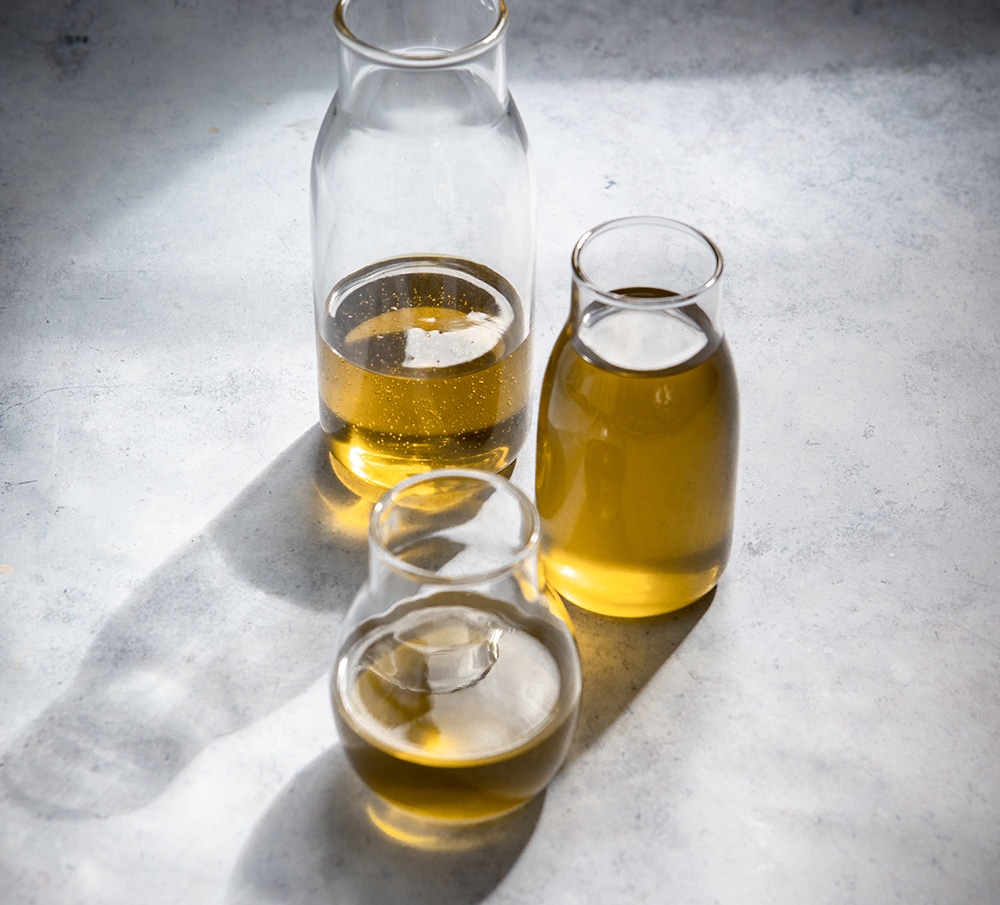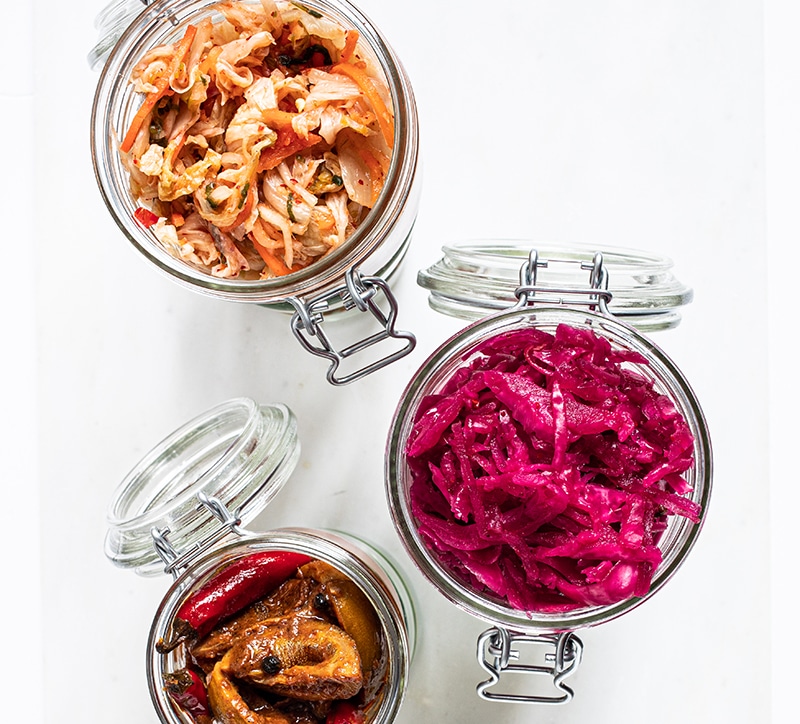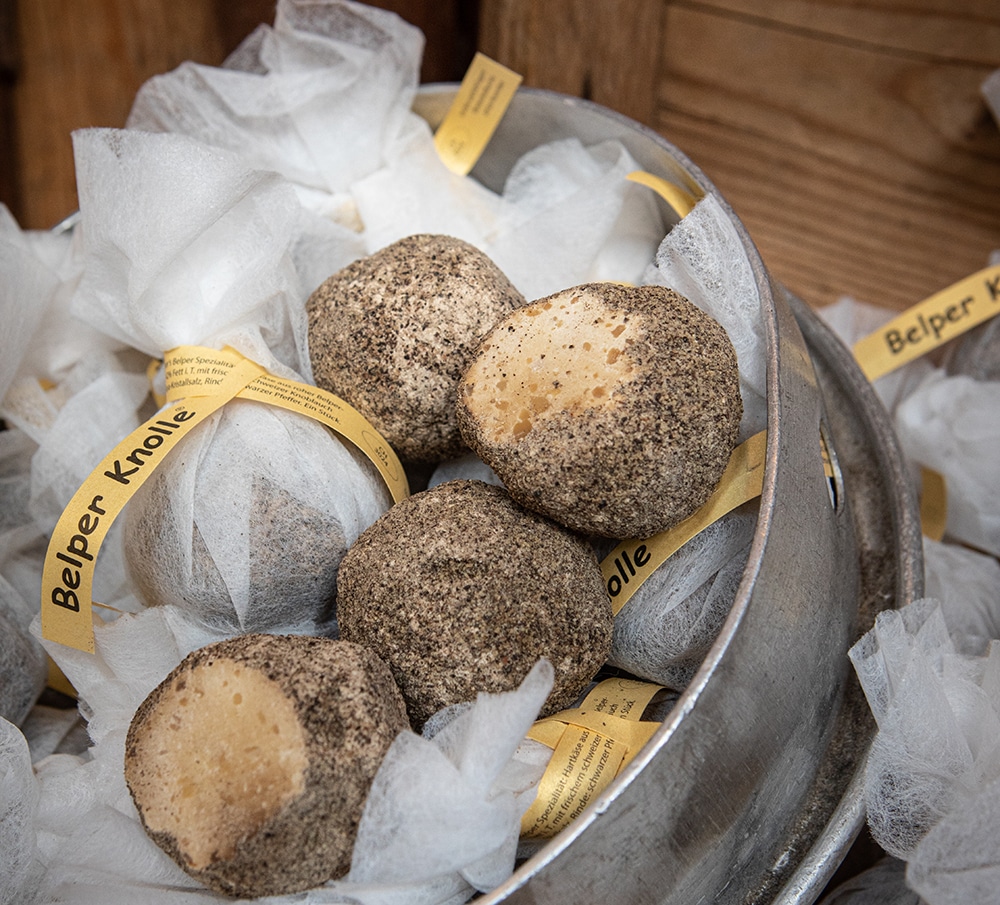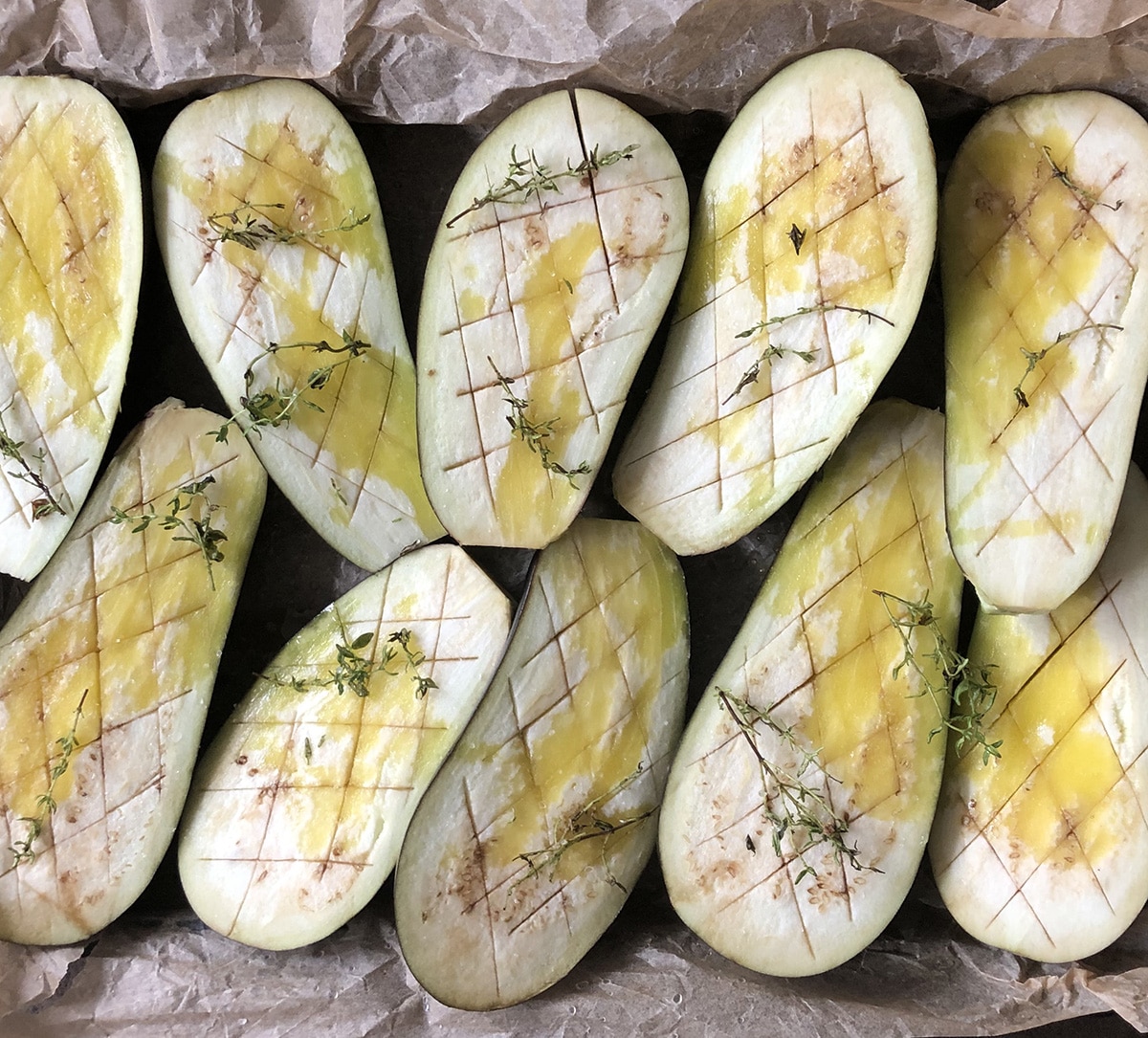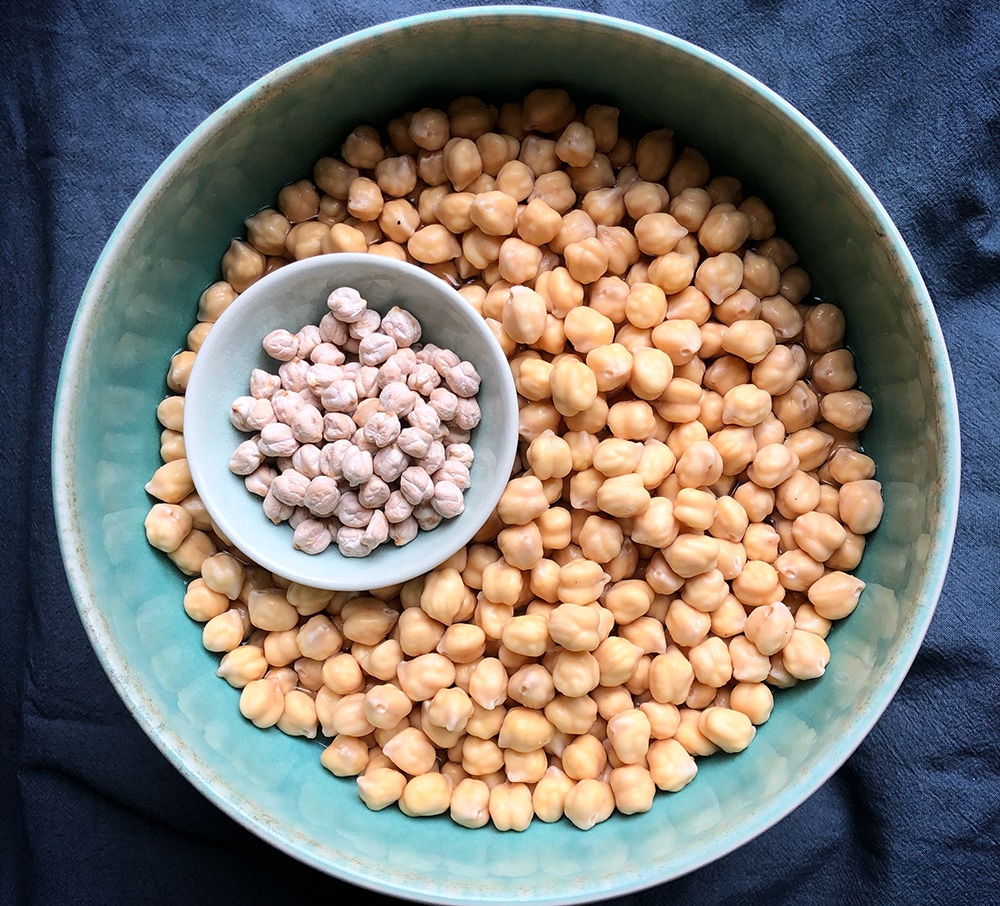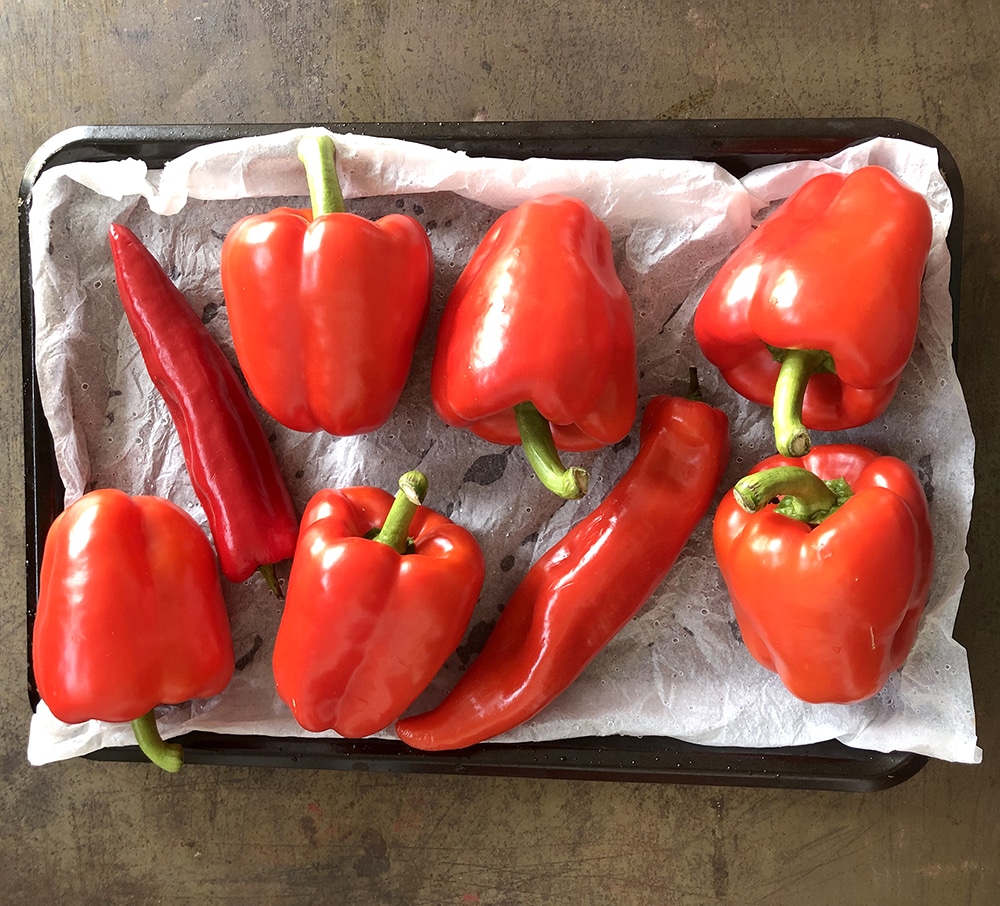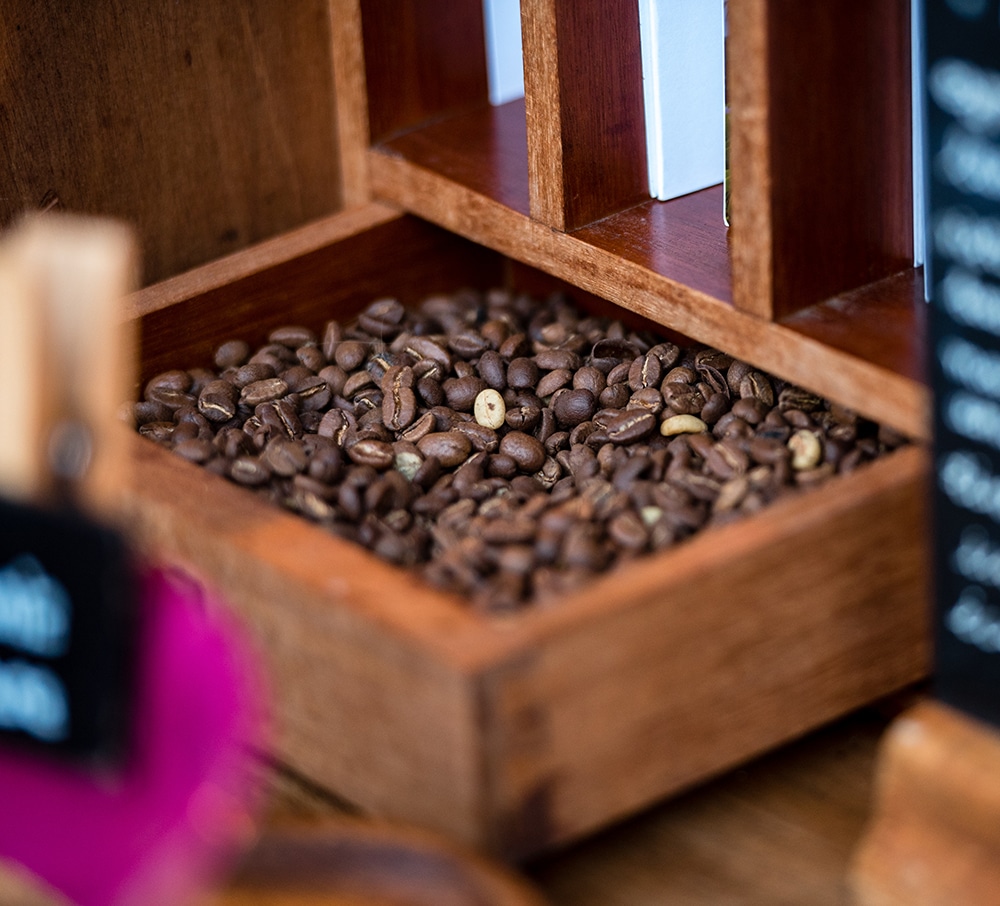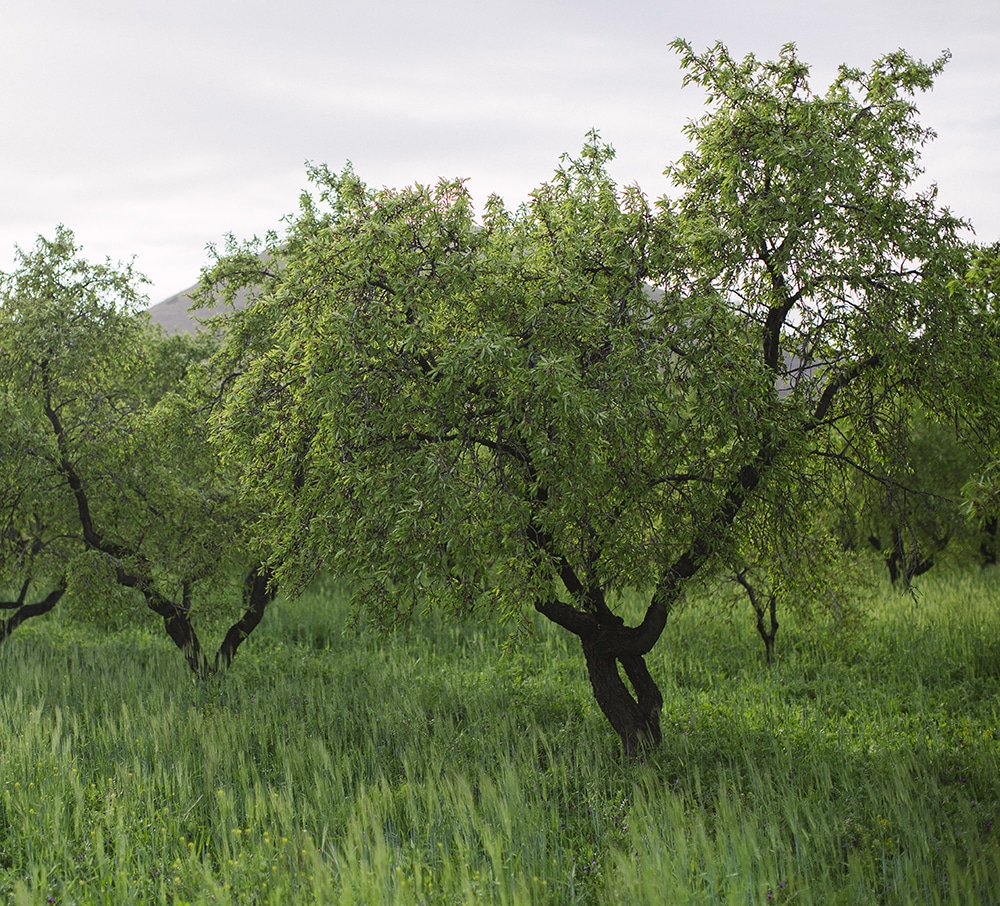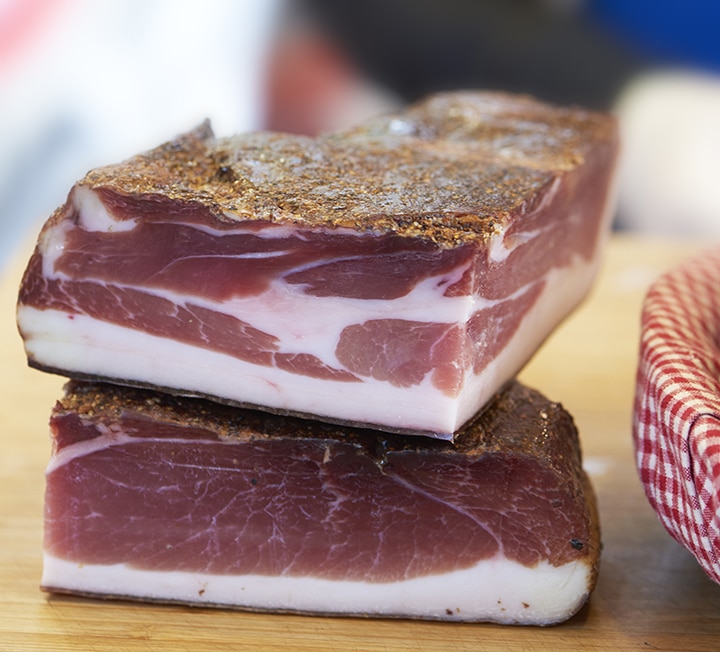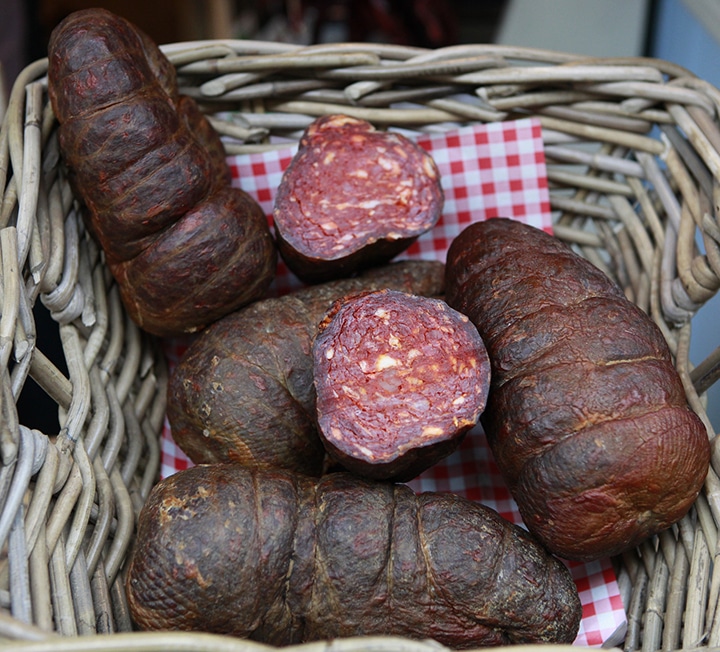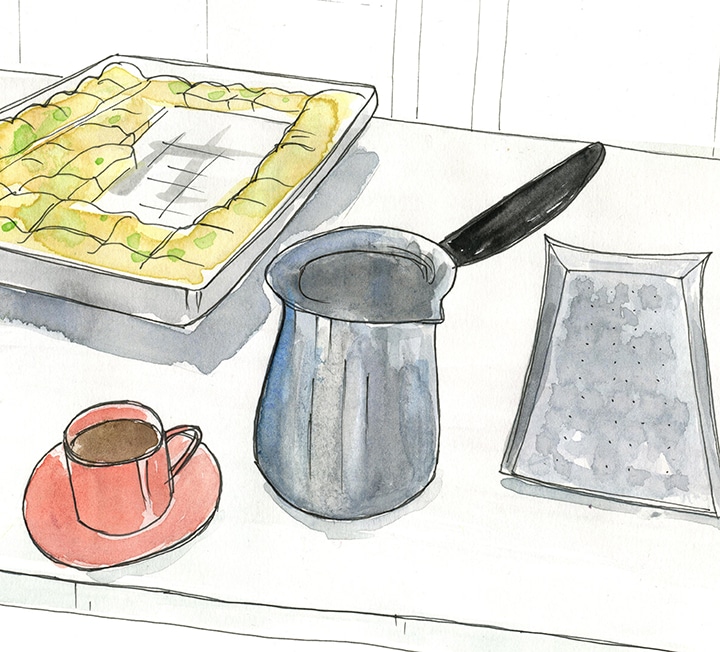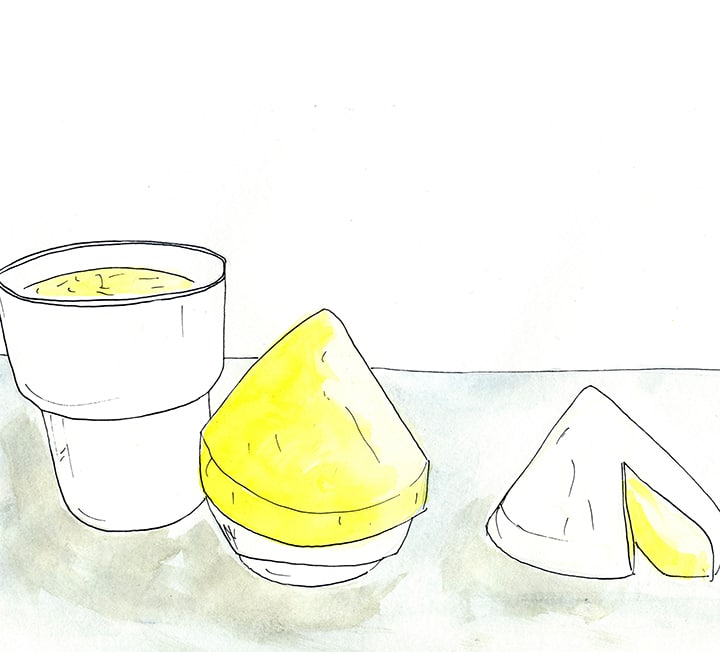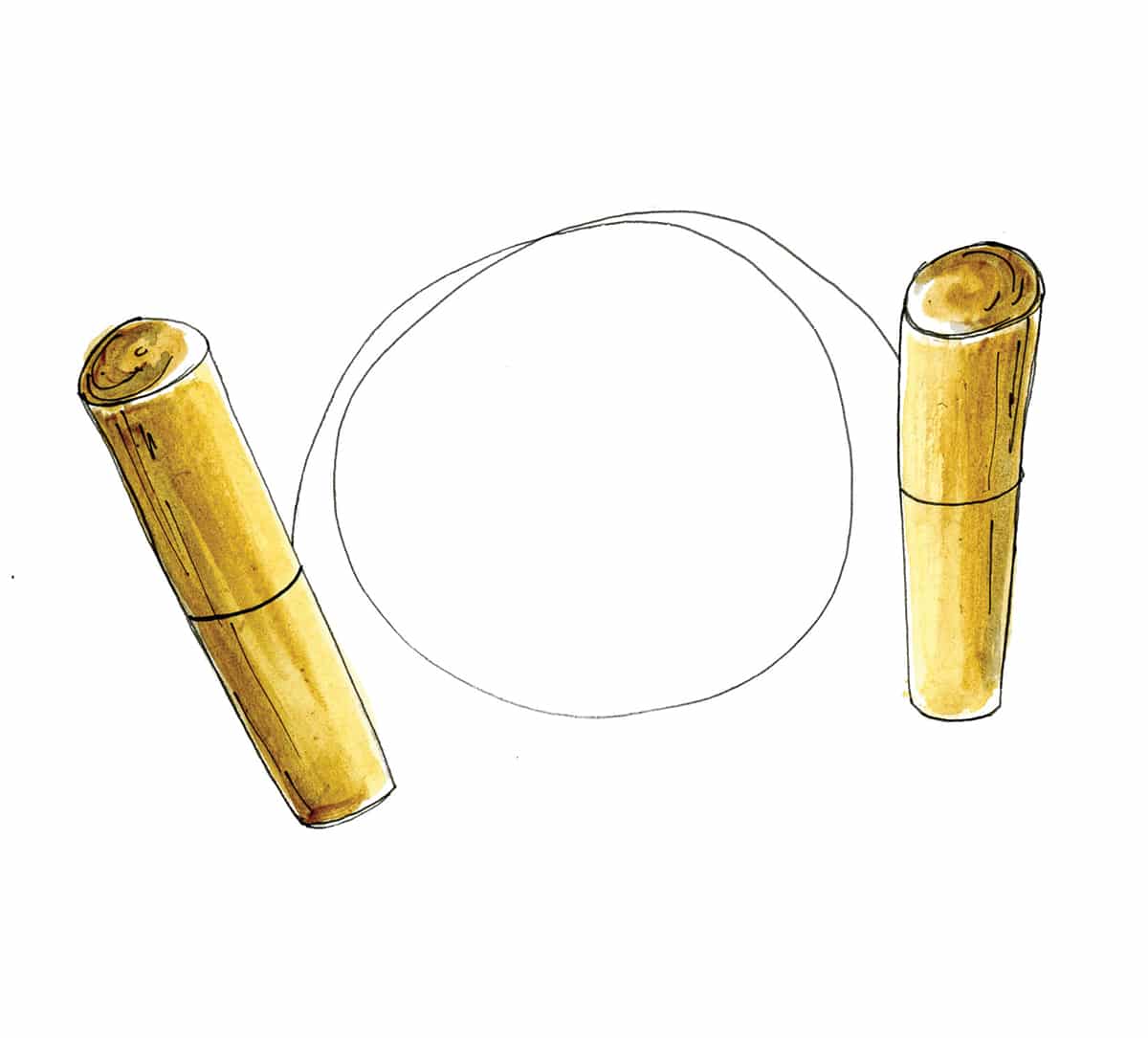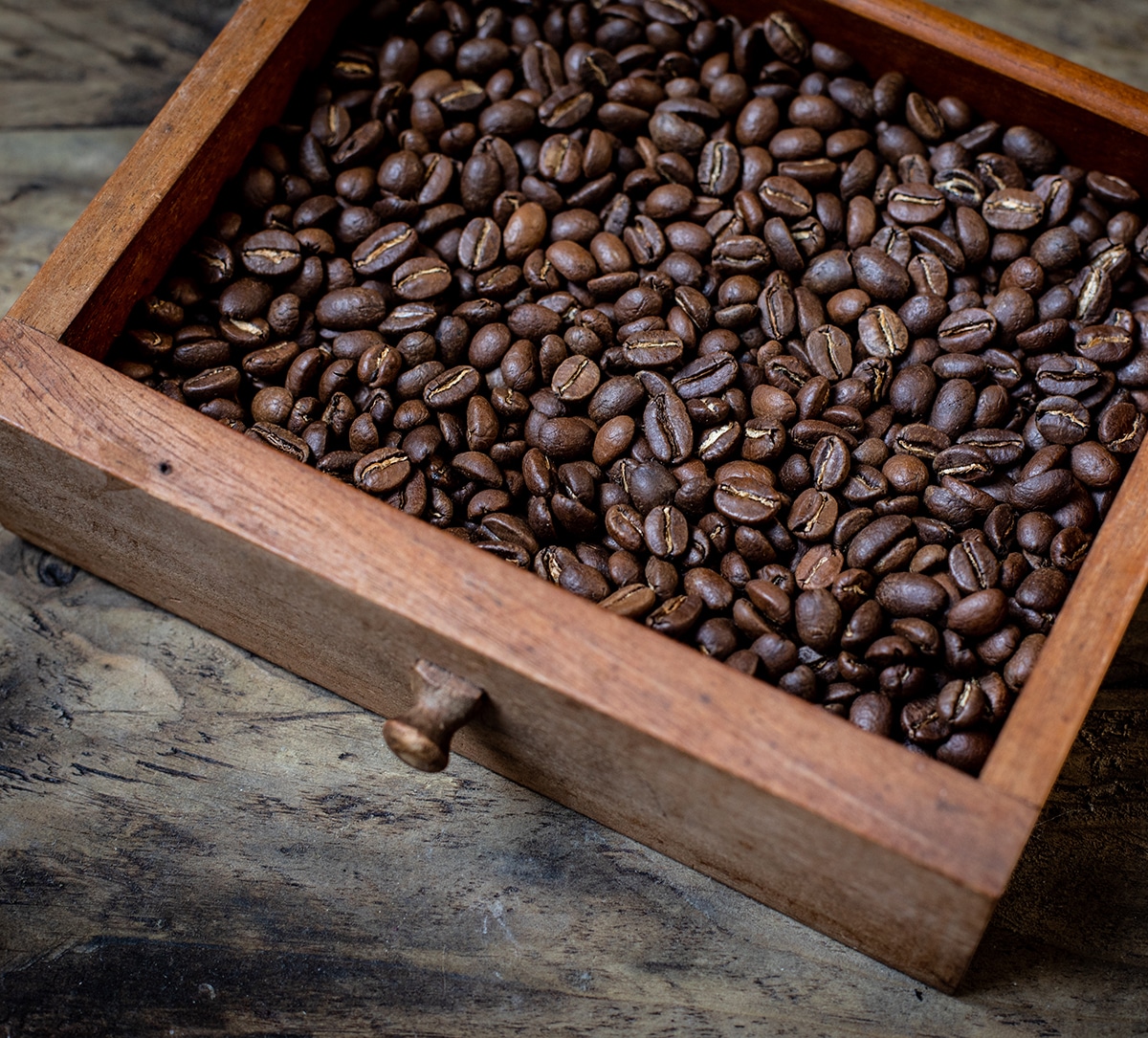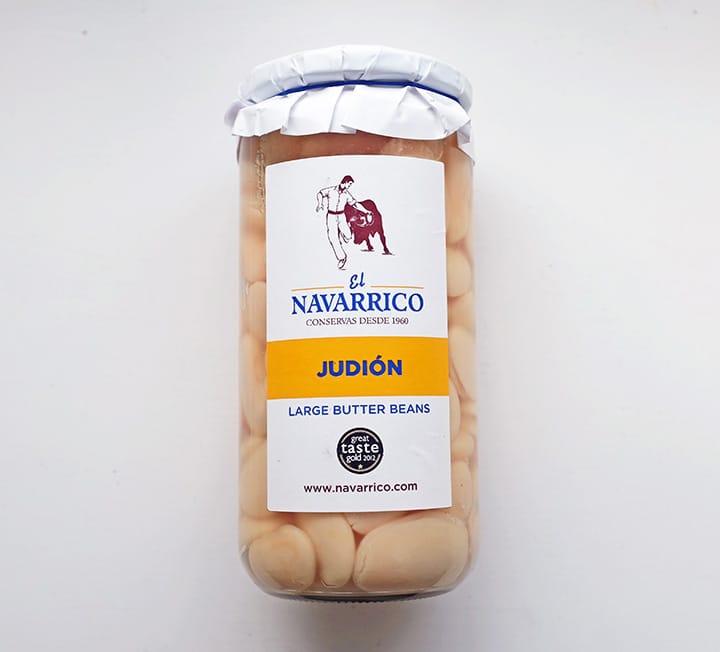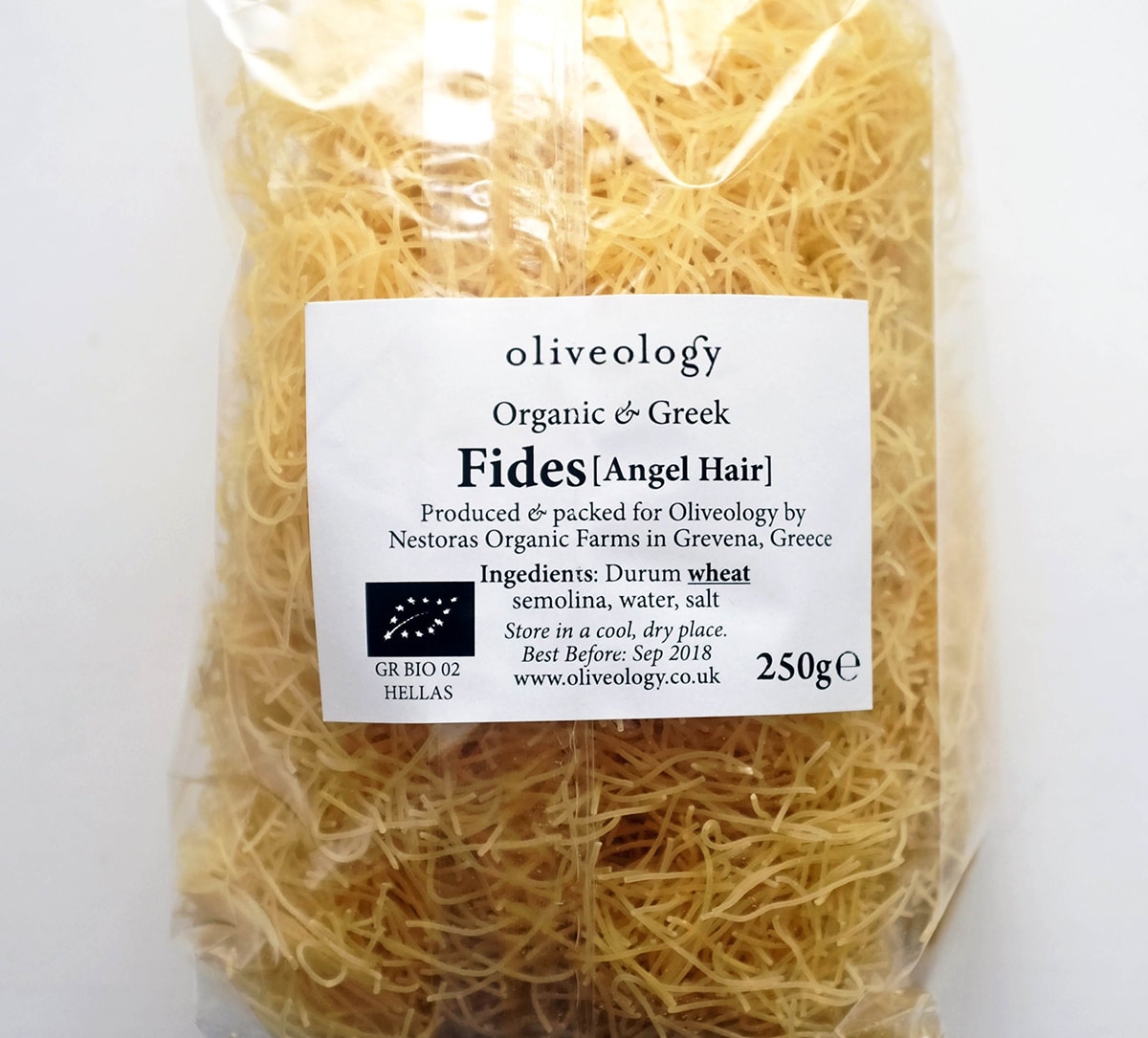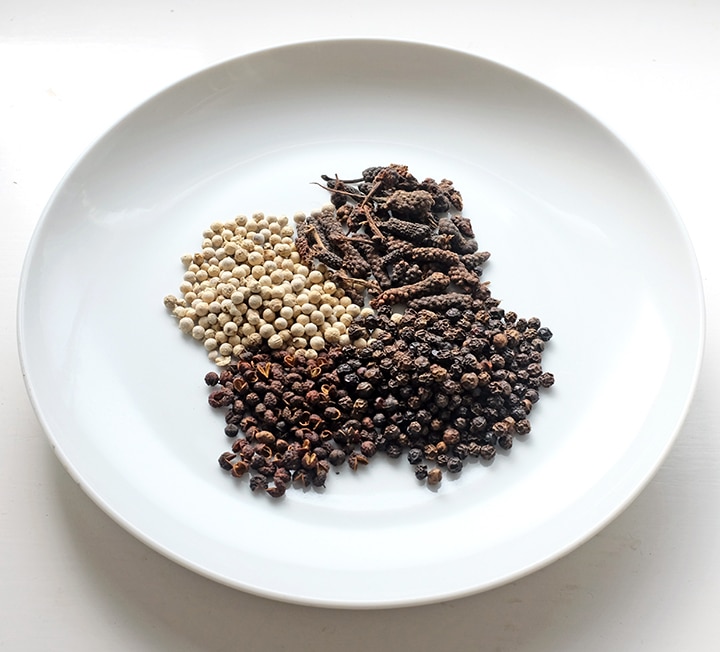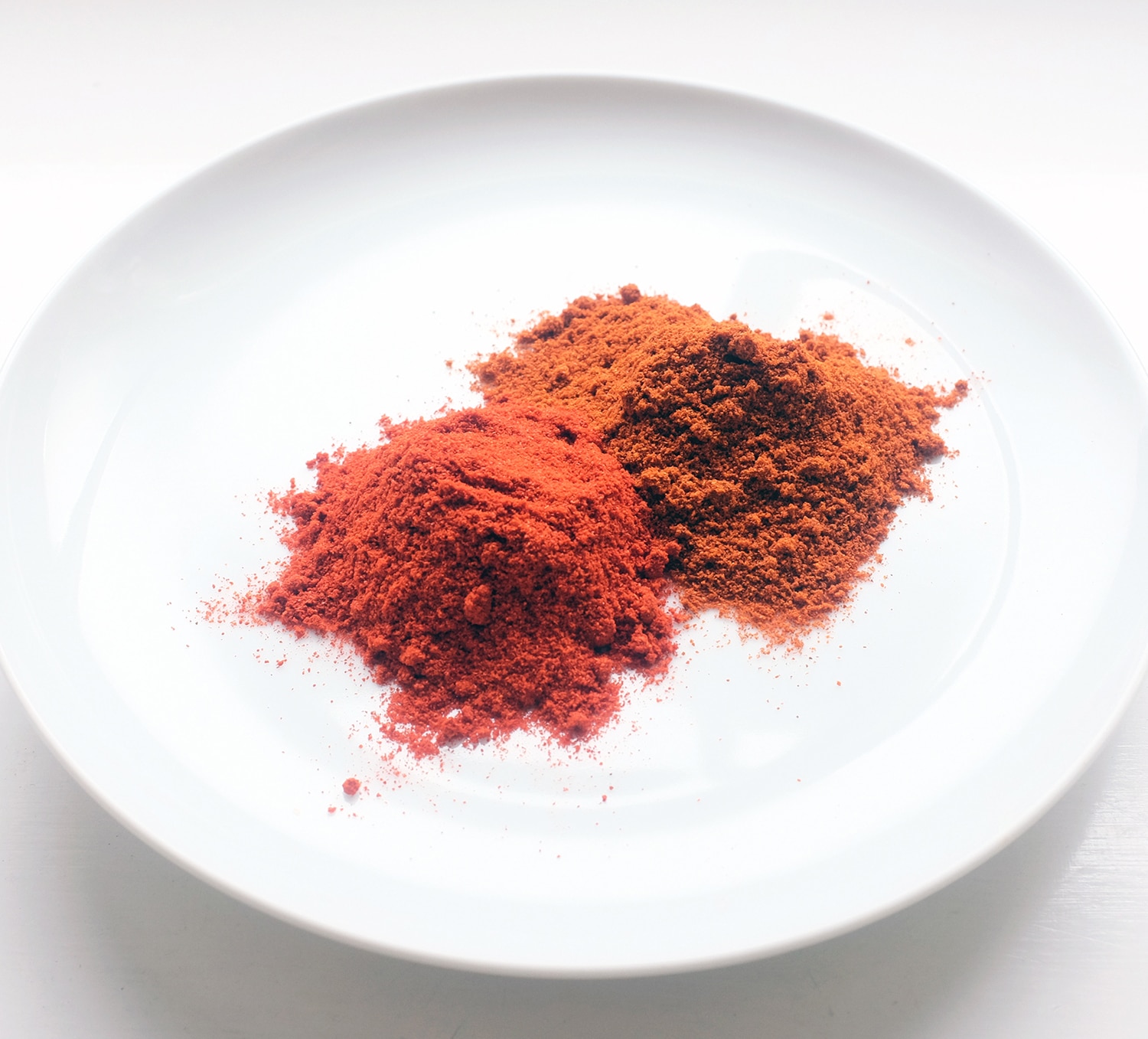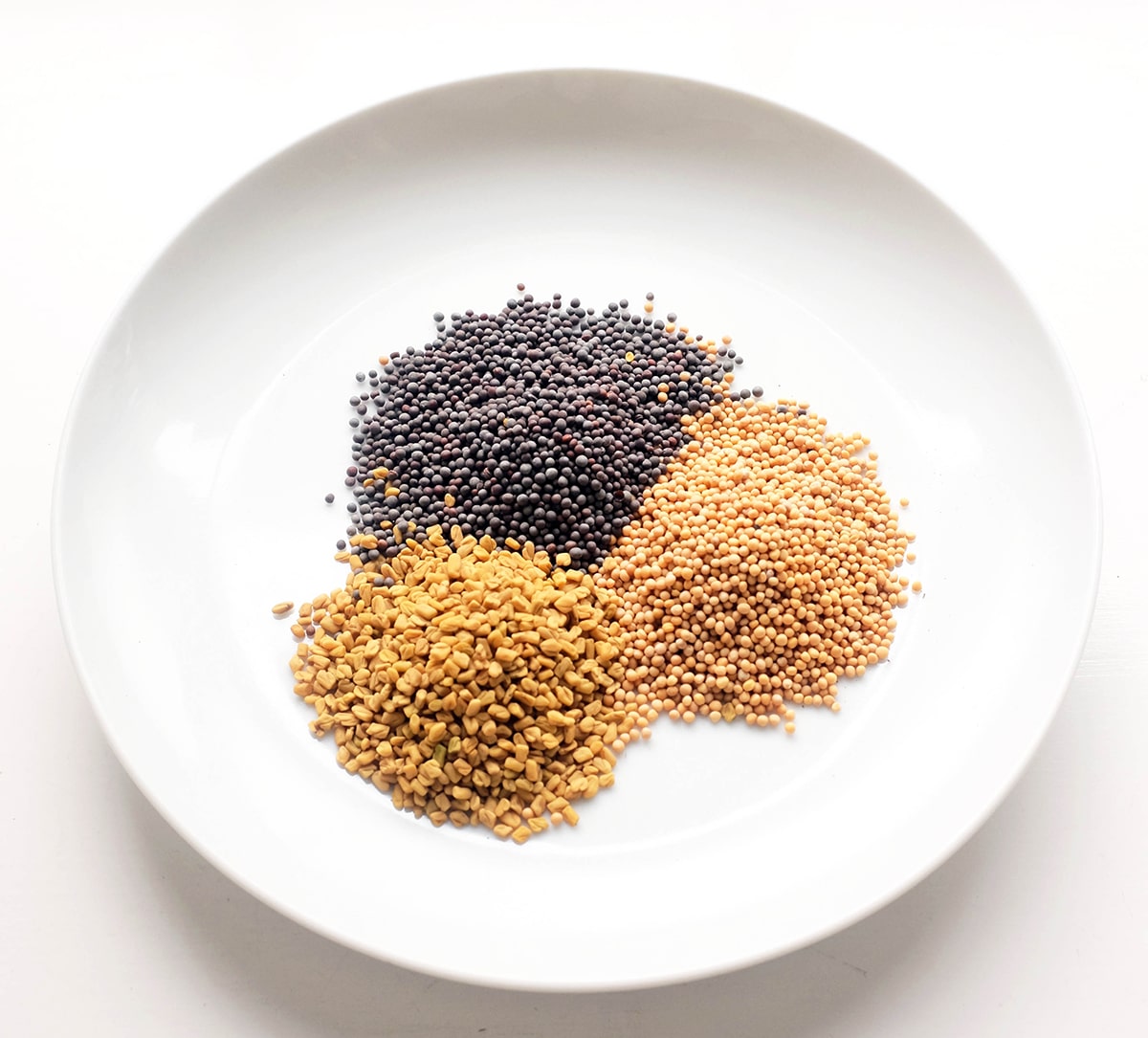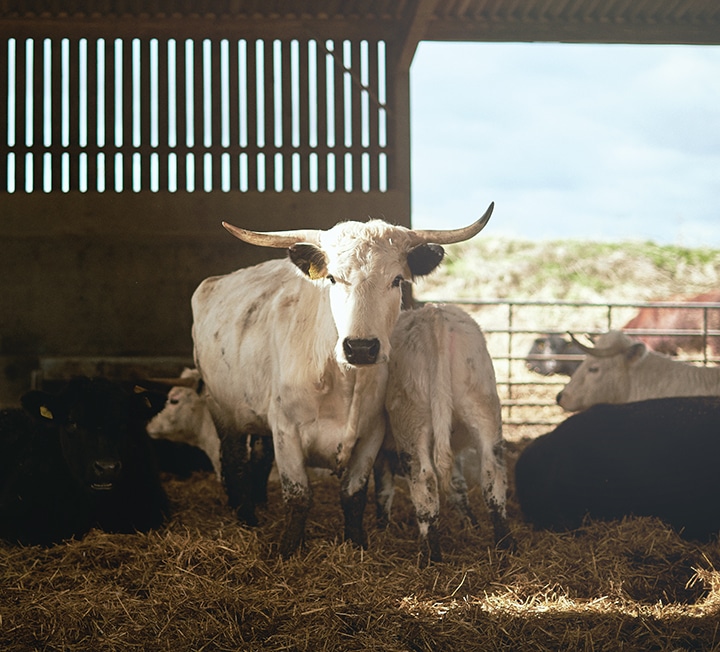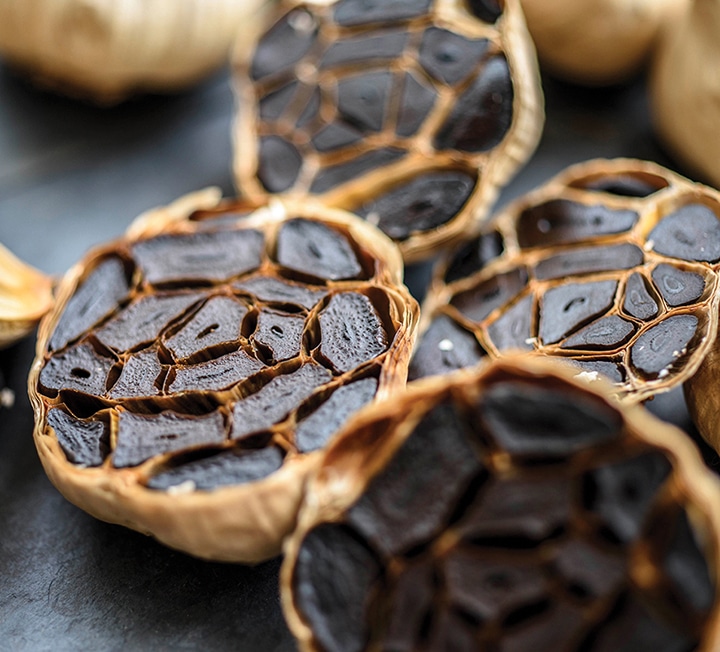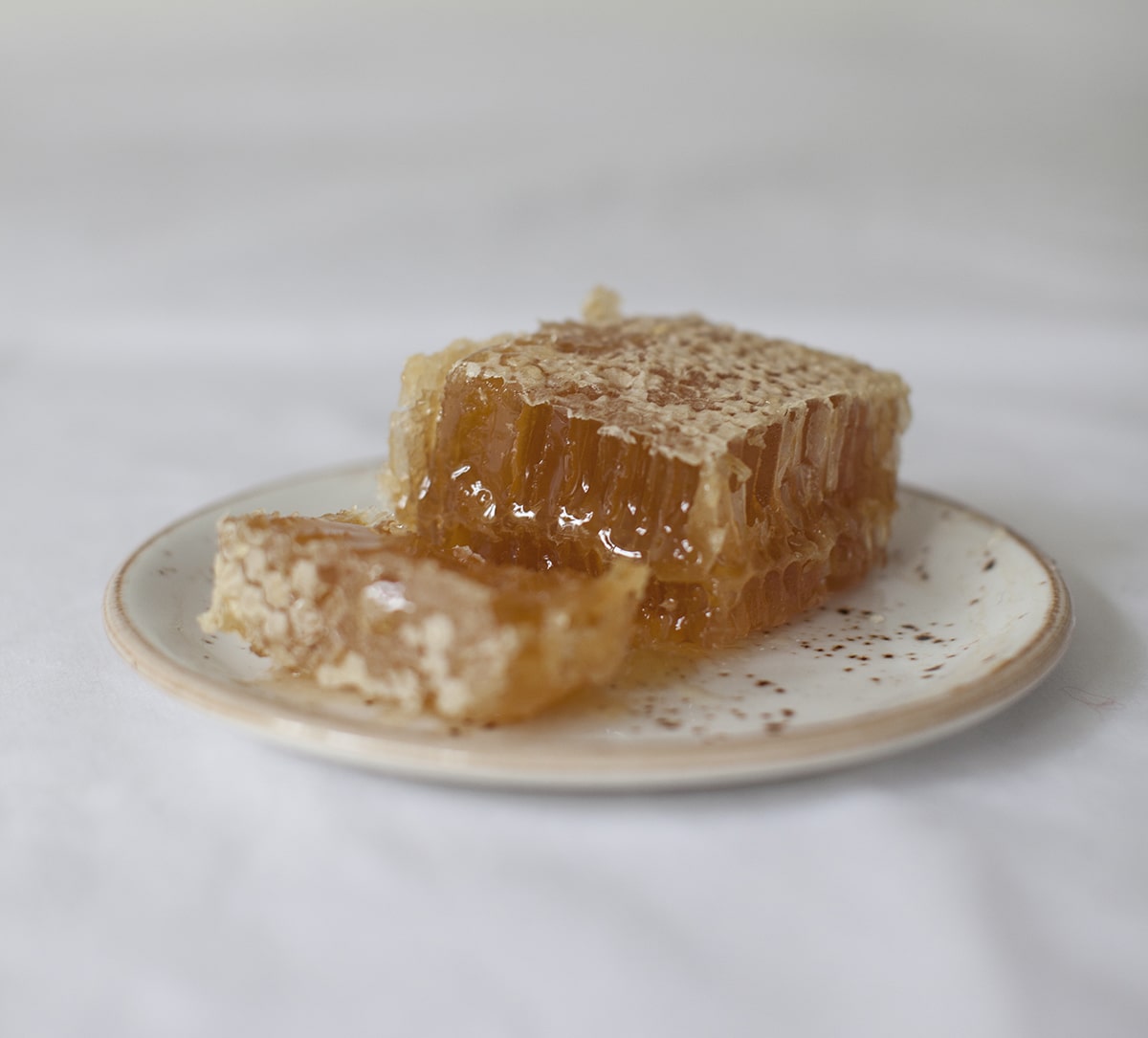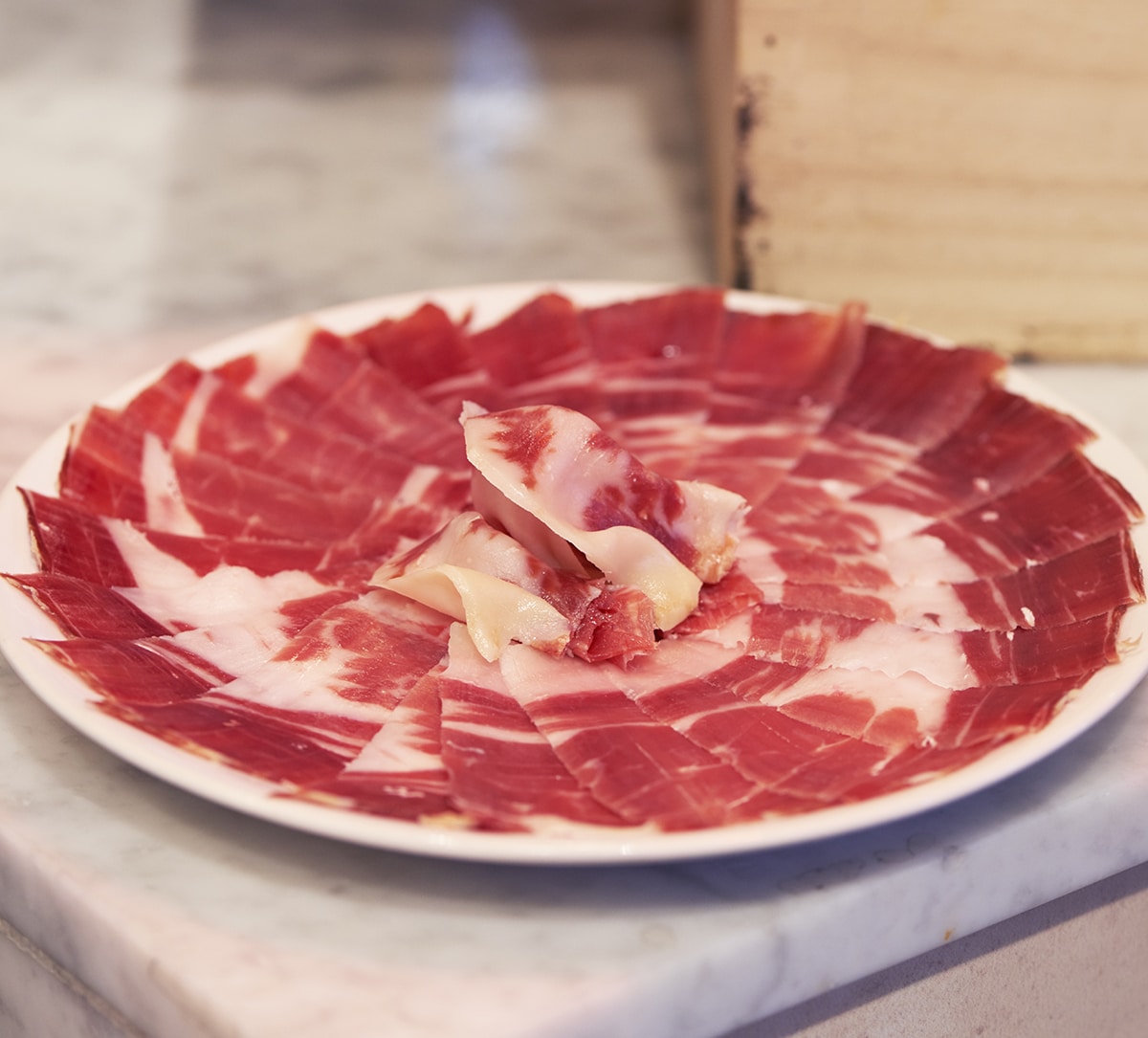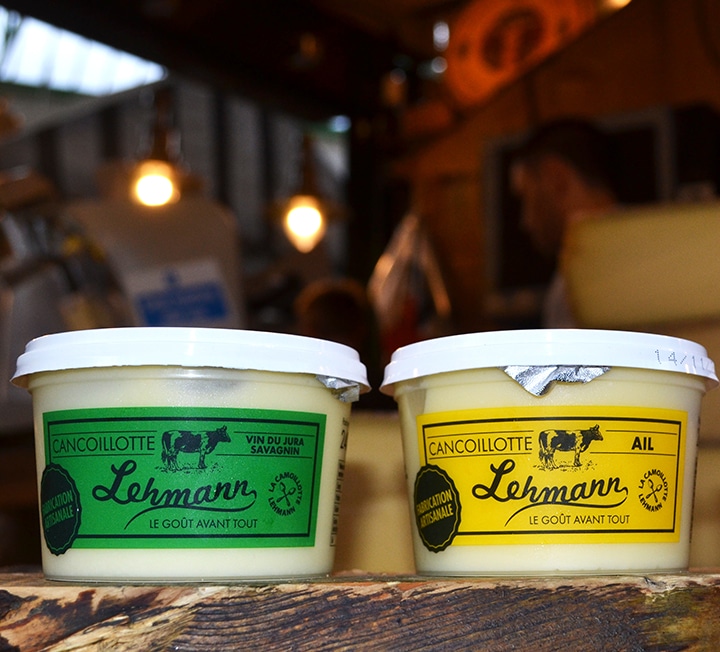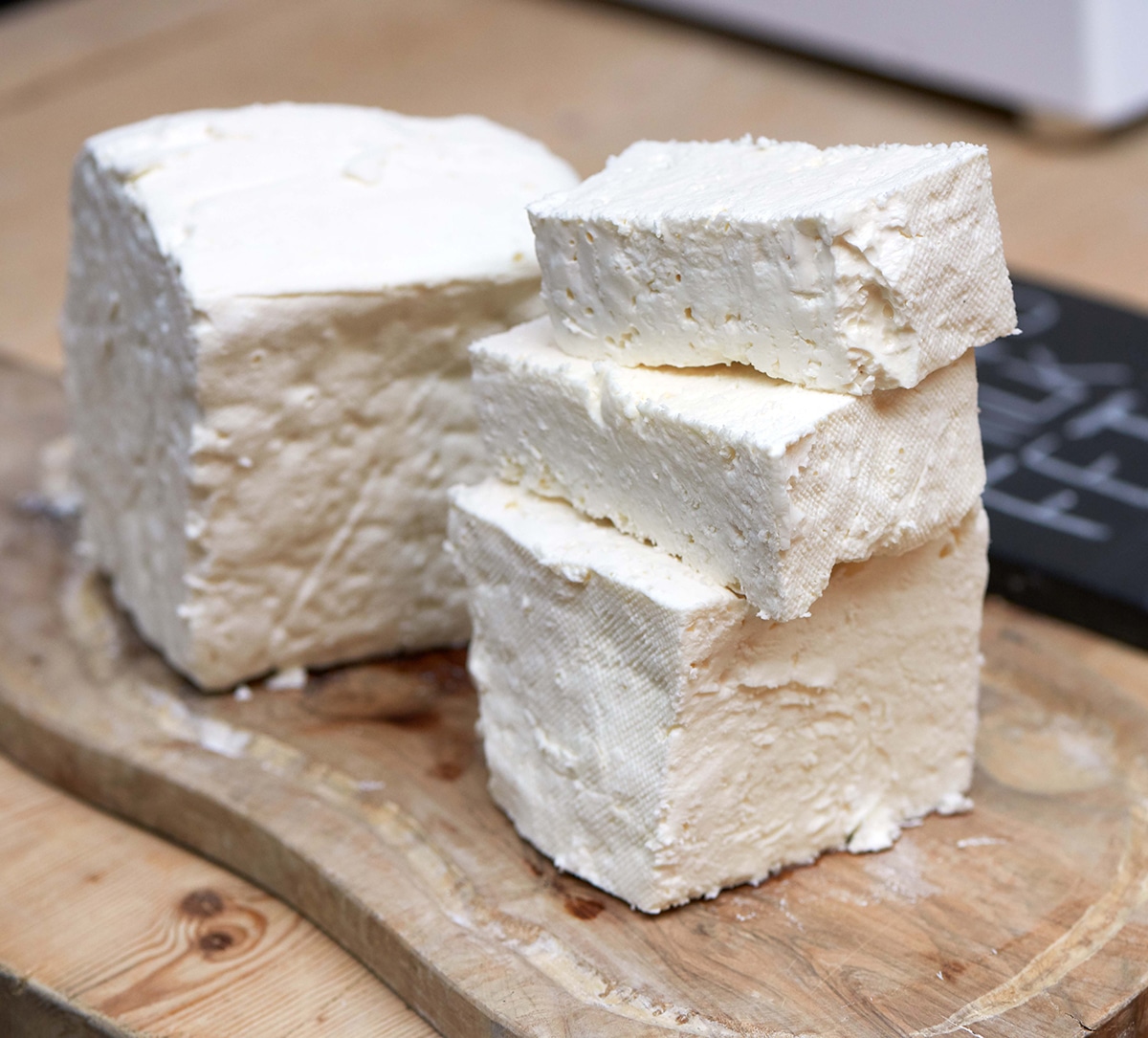Dress to impress: olives
Ed Smith on the Market ingredients that, with minimum effort and maximum effect, can embellish a finished dish. This time: olives
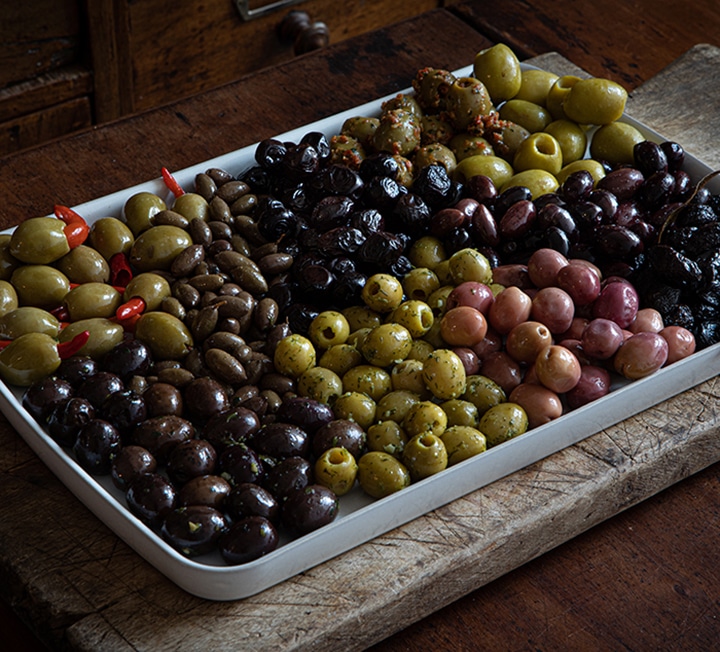

“IT’S NOT THAT YOU NEED TO MATURE BEFORE LIKING OLIVES. IT’S THAT YOU’RE NEVER TOO YOUNG TO DISLIKE BAD ONES”
Images: Regula Ysewijn
I’ve heard, many times, that our palates need to “grow-up” before we enjoy olives; that from the moment we’re born the total number of taste buds we have is in permanent decline. Strong, bitter flavours like anchovies, radicchio and olives are the ones we decline into.
So I was confused when my now toddler son began eating olives at an extraordinary (and perhaps alarming, given salt content) rate on pretty much the first occasion he gummed away at solids. What did this mean? Could we declare already that he was a man of great taste? Or, did he, in fact, not taste anything?
Disappointingly, I soon found out he was not the child prodigy I assumed he was; most other babies and toddlers I’ve met in the last few years love olives too. Why is it, then, that this ‘too adult for you’ refrain is so widely accepted?
The answer came when he ate a pizza topped with dull, briny, soapy, pitted black olives. Rather than wolf them down, he spat them out and ultimately rejected the pizza altogether. He did the same with some olives he’d commandeered at a party a few months ago, discarding the bowl and shouting “they’re yucky and disgusting”. It’s not that you need to mature before liking olives. It’s that you’re never too young to dislike bad ones.
All of which is a long-winded way to note that my horrendous foodie of a son, along with anyone else who chooses to source them, is spoiled by the quality of olives available from Borough Market. These are true taste bombs, ready-made to transform our meals.
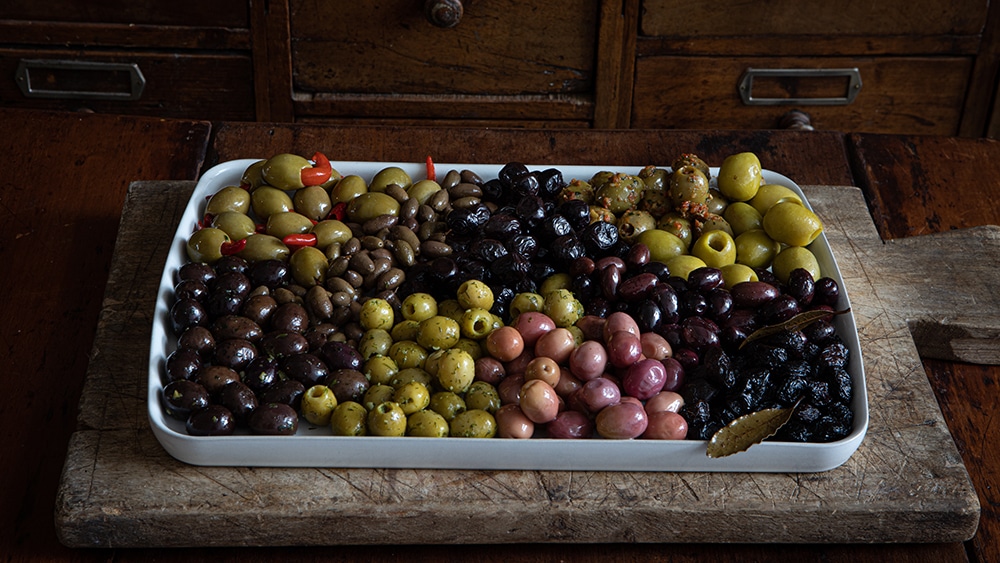
Options include the Greek varieties from Oliveology: straight-up organic, handpicked kalamatas; others marinated in the heady aniseed of ouzo; and remarkable Throuba olives, that have ripened and matured on the tree, without salt. They’re uniquely sweet-bitter, and particularly good thrown over a tomato and feta salad or chopped into a tapenade.
I love The Turkish Deli’s ink black Gemlik duble olives, so rich, savoury and somehow honeyed too. There’s a hake, cherry tomato and green bean bake recipe in The Borough Market Cookbook that suggests using them to punctuate the other flavours. Other olives exist, of course, but few provide the near maple-bacon impact of those particular pearls.
I love cruising around Borough Olives’ wooden pots of marinated Spanish and Greek olives. You can disappear down a number of olive shaped holes there – the meaty gordals, the sweet manzanillas, the black or green, the ones stuffed with peppers, the ones marinated in lemon and parsley or tomato and basil. In the end, it doesn’t really matter. Drop some in a tomato-based stew with chicken or squid, warm a few with anchovies and creme fraiche and pour over a pork chop, blitz quickly in a blender, utilising the marinade plus a little more oil to make tapenade, or chop them roughly into something between a salsa and a salad, as with the short rib recipe here. They’re an instant hit of flavour, something with enough power to both enliven subtle ingredients and match bawdy ones. When meal planning, don’t panic: there’s very little chance that whoever you’re feeding doesn’t like olives; they just haven’t tried these ones yet.
See Ed’s recipe for paprika & sherry short ribs with deli olives.
Dress to impress: olives
Ed Smith on the Market ingredients that, with minimum effort and maximum effect, can embellish a finished dish. This time: olives


“THERE ARE MOMENTS WHEN BREAD JUST HAS TO BE WHITE: A BACON SANDWICH, A ROSEMARY FOCACCIA OOZING WITH OIL”
Batch cooking is a great habit to get into. There are certain ingredients and recipes that just make sense to cook in large quantities and then stow away as building blocks for quick after-work suppers, packed lunches or just adding the special touch to a simple weekday meal. It often takes no longer to cook a double batch, so you’ll be economising on time, effort and energy too.
If you’re not a regular baker, then making a couple of loaves from scratch can seem quite a faff – doubling your dough mixture with twice the rewards really makes sense. There’s no need to create a production line of identical tin loaves, either: it wasn’t until I began working with French baker extraordinaire Richard Bertinet that I started considering a dough as a blank canvas that could evolve into any number of different breads, rather than each loaf requiring its own recipe.
Olive oil dough is the starting point for almost all my desert-island home bakes (along with sourdough, but that requires an entirely different level of dedication. Or perhaps just a trip to the Market to snap up a loaf). I know that both nutritionists, and good sense, point us in the direction of all the brown varieties – the wholemeals and granaries – but there are moments when bread just has to be white: a bacon sandwich, a rosemary focaccia oozing with oil, and there’s quite simply no discussion when it comes to a pizza base.
It’s important to create a really loose, wet dough if you’re after light bread, so I’m afraid that old school recipe that you bounced around the kitchen surface is out. A stickier mix may be more difficult to handle, but the proof of the (bread and butter) pudding is in the eating, so do take the plunge and have a go at this master bread recipe. I usually make a double batch, giving me plenty of options. Once the dough has risen to about twice its size, you can turn it out onto a very lightly flour-dusted surface and divide it using your scraper as a cutter. Making a variety of different breads will mean that you don’t require a huge oven: some dough can be frozen, some slowed by proving in a cooler space while the first batch bakes.
Raw dough does freeze but never seems to have quite such an effective second rise once thawed, making it ideal for crisp, thin pizza bases. I always keep half a dozen balls of dough in the freezer, ready for individual pizzas. Shape 250g pieces of dough into balls and freeze in individual sandwich bags. Once required, you can pop these in the fridge to thaw while you’re at work for the day or, if pressed for time, just dunk them into warm water in their sealed bags while you’re busying yourself with the tomato sauce. Flatten (rolling pin, or more dramatic flinging and slinging, that’s your shout), top, and bake in your hottest oven.
Tin loaves are great for sandwiches and then perfect for toast as the bread ages. You’ll want a 450-500g quantity of the dough for a small greased tin (often still sold as a 1lb tin – about 20cm long). Flatten the dough into a rough square, roll up like a swiss roll and place in the greased tin. Cover with a tea towel and leave to prove (the second rise) until doubled in size and then bake at 220C for about 25-30 mins, until it slips out of its tin and has formed a good crusty bottom.
Bread rolls shaped into balls from about 75g dough each are great for packed lunches and once proved, will bake in about 10 mins at 230C. Focaccia, the dimpled Italian flat bread with herbs, salt and lashings of extra virgin olive oil, is perfect for using any random quantities of dough. You’ll find the recipe here. So, the question is, why would you ever want to make one loaf when you could create a feast or stock up the freezer?
Dress to impress: olives
Ed Smith on the Market ingredients that, with minimum effort and maximum effect, can embellish a finished dish. This time: olives


“IF TREES CAN BE SO CONNECTED TO THEIR ENVIRONMENT AND THEIR COMMUNITIES, SO, SURELY, CAN WE”
It’s entirely normal to be connected these days – it has become an integral part of the way we live. Most of us are connected to everything all of the time, and the more connected we become the more desperately we feel the need to connect.
This is quite different to the way things used to be. Much of what we now do, we do without even moving. From a table at home, we can work and shop and make friends. We can even do it from a plane or from a train. It now takes little more than a few taps or a couple of clicks to fill the fridge or put a meal in front of our children.
These days it doesn’t matter if someone we love is on the other side of the world, they can still be in our kitchen in pixels. We can send any amount of information to anywhere, instantly, and if we want or need something, at any time, anything at all, we can get it, just like that. Sometimes, when I stop and think about this it scares me.
In light of all this connectivity, isn’t it strange how disconnected we can be from some of the other things we used to have in our lives? Like the ocean, like the honeybee, like our woodlands, like the seasons, like our communities.
In the spring, sugary sweet sap rises from the roots of trees towards their limbs. Eventually it finds its way through the more delicate branches to the young buds. The sap gives the buds life. It’s possible to tap the sap from some trees to make a delicious wine. Tapping sap has been done for thousands and thousands of years. Amusingly, when you type ‘sap’ into a search engine it takes you to a software company.
I only mention the trees because I love them, they are a miracle, and in terms of connectivity they lead the way. Did you know trees are able to communicate with one another, as well as other plants, through an intricate subterranean lattice of mycelium into which their roots connect? Mind blown, every time. They also provide us with delicious fruit and nuts and, most importantly, oxygen. If trees can be so thoroughly and productively connected to their environment and their communities, so, surely, can we.
One of the best ways to really engage with the place in which you live (apart from hugging trees) is to shop locally and cook seasonally. I know it sounds simple, but it’s true. The choices we make when we buy and make food can have genuinely positive effects on us as people and on the world around us.
Adopting a more mindful approach to food can end up connecting us in ways we hadn’t thought possible. Some of my closest friends, I’ve met through food. I’ve got to know the beautiful landscape that I live in and found myself closer to a community of people who work really hard within it to make a living, growing food in an ethical, sustainable and respectful way. It’s opened my eyes to the seasons, how they change so gracefully, and what that means to the people whose lives are hardwired into them. The good news is that our modern ways of doing things, of communicating, learning and sharing, can actually help us connect with the natural world and the amazing bounty it provides. Key the name of your local market into a search engine, and take it from there.
Cut & dried: Italian salumi (part one)
Ed Smith explores the famous cured meats of Emilia-Romagna, Tuscany and Lombardy
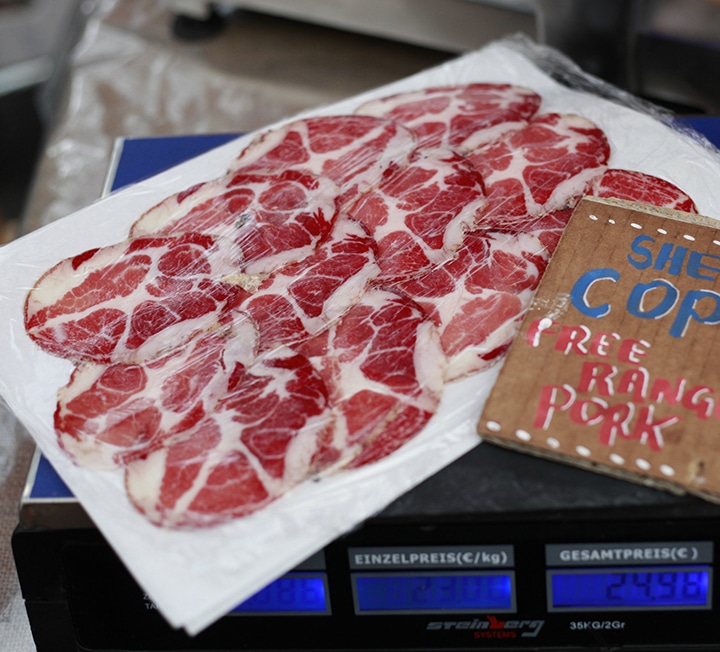

“ITALY IS BLESSED WITH JUST THE RIGHT HUMIDITY, HEAT AND WIND FLOW TO AIR DRY MEAT”
Words: Ed Smith
In Britain, most of us refer to cured meat as ‘charcuterie’, which is the French word for meaty things (more on them in a few months’ time). In the context of European cuisine, however, there’s a strong argument that it’s the (Roman) Italians who originated, perfected and codified the craft of cured, air-dried meats – and so perhaps we should refer to sliced hams, belly meats, back fat and sausages as they do: ‘salumi’.
I once spoke with a British charcutier who said there wasn’t much he could learn from an Italian about curing because if he followed their instruction, leaving his meats to dry in caves set into the hills in Monmouthshire, he’d end up with mouldy meat. Italians in the belt of northern Italy that runs through Emilia-Romagna, Tuscany and Lombardy are, on the other hand, blessed with just the right humidity, heat and wind flow for the cuts of meat they cure with salt to be turned into delicious salumi.
Break it down
Italian butchery has evolved to ensure all parts of a pig can be cured. This is because the original purpose of curing was to preserve meat as a protein source in times when refrigeration and freezing were not an option. Whereas traditional English and American butchers would remove the shoulder of a pig, Italians ‘harvest’ a muscle known as the ‘coppa’ or ‘capocollo’ from the top of the neck so it can be cured in one cylindrical piece, rather than slicing through it.
Other defined parts of a pig – the loin, belly, and the back leg or ham – are separated for curing into ‘lonza’, ‘pancetta’, and ‘prosciutto’ (though in Zibello in Emilia Romagna, the ham is separated into ‘culatello’ and ‘fiocco’ as the air is too humid to successfully cure a whole leg). The remainder, including much of the fat, is minced to make sausages, known as ‘salami’.
At a very basic level, that’s it: a pig is broken down into its constituent parts, salted, fermented and air dried over a period of time, and you end up with either a muscle meat or a salami to slice.
Variety comes from the breed of the pig, its diet, the terroir and atmosphere of the relevant area. Indeed, in Italy, many (most?) meats are labelled to reflect either the specific regionality of the product (IGP – Indication of Geographic Protection) or that the salumi has been produced, processed and packaged in a specific geographical zone and according to tradition (DOP – Protected Designation of Origin).
The legs
A good example of how the same cut of meat can be a different product depending on regional variations is Italian cured ham, or ‘prosciutto’. You can explore this in real time at Borough Market by comparing prosciutto di Parma and prosciutto di San Daniele at The Parma Ham and Mozzarella Stand.
Parma ham, from Emilia-Romagna, is the highest profile air dried Italian meat. Though it is ultimately sliced into thin sheets, you will see it at the stall, hung still in its guitar-shaped thigh form. The legs are salted, then larded and hung to dry for up to 18 months. As a result, the flavour is deep, nutty, salty, slightly musty, and there’s masses of umami.
Though there are stipulations as to where pigs used to make Parma ham must be farmed, not all Parma ham is created equal. As owner Philip Crouch explained to me, one crucial difference is that the top, reserve-grade producers get first choice of the hams after slaughter, choosing them on the basis of age, fat ratio and size. Industrial-grade Parma hams are often made from pork that has been frozen, which seems to yield a lesser quality product. From Philip’s experience, it’s important for an importer to have a good relationship with the producer, and over time build a trust that ensures a consistently high-quality product.
An alternative is prosciutto di San Daniele. It’s the same piece of meat, but Italians will tell you that the taste is very different: sweeter, softer, more delicate. Perhaps because the drying (or maturation) time is shorter – around 13 months. Though the pigs can be from one of 10 regions, the ultimate production of the hams must be within a relatively small area in the commune of Friuli in Udine, northwest Italy. It has a unique microclimate which is influenced, it is suggested, by salty winds blown in from the Adriatic. Philip’s producer’s family has been producing the meat for hundreds of years, and “there’s an alchemy and experience and skill that they have in spades” that comes through in the eating experience.
Don’t take the tasting notes as definitive, though – try them both for yourself when next at Borough Market.
The fatty bits
Fat is a vital component of cured meats. Think of the marbling running through a piece of coppa (or jamon Iberico, for that matter); of the chunks of varying proportions distributed through salami, or of that ribbon of fat running over the top of a silk sheet of prosciutto ham or loin. Those bits are not there as something to be torn off and left on the edge of the plate. They provide a luscious texture, carry and enhance the qualities of the meats round your mouth, and have a flavour all of their own.
With that in mind, perhaps it shouldn’t be a surprise that there’s a whole genre of salume that’s basically just salted and cured fat. When it comes to lardo, guanciale, pancetta, and even pressed head (a brawn-like item called gelatina, coppa di testa and soppressata, depending where you are in Italy), fat is not the supporting act but the star.
The king of this genre is lardo di Colonnata: blocks of back fat taken from above the loin, salted and laid for months in marble boxes in a Tuscan hamlet. Unless you’ve a slicer of your own, buy it in thin strips and keep it very cold. Remove the lardo from its paper while still cold, but then wait until it’s at room temperature to relish it as antipasti, as you would any other salume, or lay it over warm green vegetables, potatoes and so on to enjoy the best salty seasoning of them all.
Look out too for guanciale and (proper) pancetta. Contrary to once-popular belief, pancetta is not the same as bacon. Instead, the kind you’ll find at The Parma Ham and Mozzarella Stand and Gastronomica is fully cured and ready to eat (again, slice thinly), though you can cook with it if you wish. Alternatively, consider cooking with guanciale, created from the cheek of the pig – The Parma Ham and Mozzarella Stand has a couple of options, one of which is the base ingredient for a proper carbonara.
Other salumi stars available at the Market
— Salame finocchiona: a sausage of finely ground pork belly, black pepper, chianti and fennel seeds.
— Salame Toscana: a sausage of relatively coarsely ground pork and large cubes of back fat, plus black pepper and red wine, sometimes garlic too.
— Salame Milanese: finely ground pork shoulder, with flecks of fat obvious throughout. Often quite large, yielding wide slices.
— Mortadella: a large sausage made of finely ground pork meat, blended (or ‘emulsified’) with a specific ratio of fat and spices, and cooked. True mortadella is from Bologna, the capital of Emilia-Romagna, and should be very thinly sliced.
— Coppa (or capocollo): a cylindrical muscle from the hard-working shoulders of a pig, so it’s dark and intensely flavoured, and marbled with intramuscular fat. Should be thinly sliced by machine. Coppa is a common cut across Italy – variation comes from the breed of pig and spicing in the cure. A number of IGP and DOPs exist, for example coppa di Piacentino and coppa di Parma, which must be made from pigs reared in those specific regions, be bagged in a pig or beef casting, and dried for at least 60 days.
— Lonza or lombo: cured pork loin (picture the larger part of back bacon or a pork chop). The leanest cut of salumi, though Italians leave a larger amount of back fat on the muscle than the Spanish do with their ‘lomo’. Must be sliced thinly.
— Pancetta: the belly of a pig. Can be left as one flat piece of fatty pork or rolled (‘arrotolata’). Often flavoured with lots of herbs and though it can be and often is cooked, in contrast to British bacon, pancetta is fully cured and if sliced thinly, ready to eat.
Where to shop for salumi from these regions at Borough Market
Bianca Mora has a concise selection of very pure and unadulterated cured pork from Emilia-Romagna; at Gastronomica you’ll find a wide spread of cured meats from across Italy (look out for their Tuscan finocchiona salami); The Parma Ham and Mozzarella Stand stocks all the classics, sliced to order.
Tools of the trade: coffee filter cones
AJ Kinnell of Monmouth Coffee Company on one of the essential tools of the business
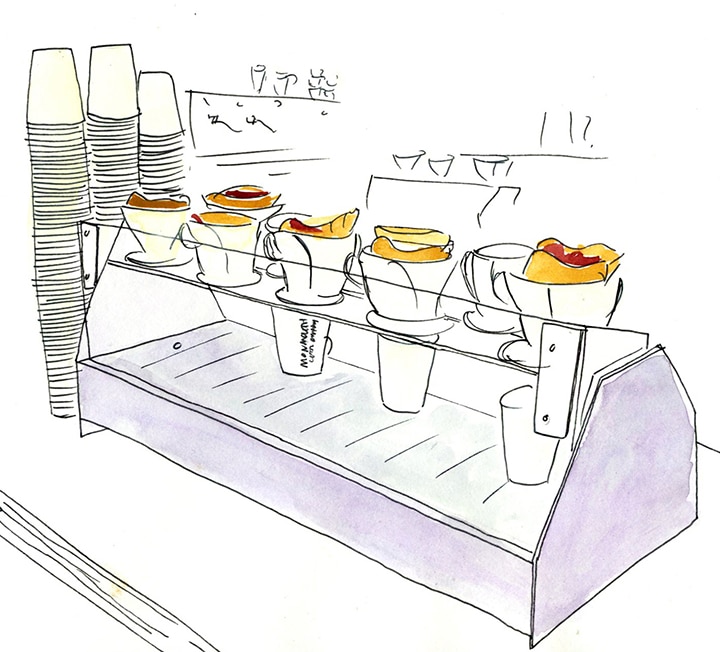

“RATHER THAN AN OVERLY SCIENTIFIC RATIONALE, OUR SYSTEMS ARE BASED ENTIRELY UPON ‘BECAUSE WE LIKE IT’”
Interview & illustration: Ed Smith
In 1978, when Anita Le Roy opened her first Monmouth Coffee shop, the business was purely a roastery that sold beans. There was, however, a sampling room upstairs, where people could taste the coffee and decide which variety they wanted. We used a filter because it’s quick and clean. Here at Borough Market, you can still taste a filter-brew coffee before buying your beans. Or if you’re having a cup of filter coffee, you’re welcome to select which bean variety we make it from. In a way, it’s how we’ve always done things.
Rather than an overly scientific rationale, our systems are based entirely upon “because we like it like that”. This includes the type of filter cones we use. You’ll see eight to 10 ceramic pouring cones racked up towards the front of the service counter. They’re based on a shape that Anita liked and had a ceramicist friend recreate. A Japanese colleague recognised them as being similar to ones made near her home, and we’ve been importing cones from Japan ever since. They have a squared-off base rather than the pointed tip that some brands have.
Originally, the measurement of beans we used for each serving was “a handful”. That translated to 20-30g, depending on the size of the hand. Around 15 years ago we made it a more formal 25g serving. We’ve tried everything from 14g to 30g, but we keep coming back to that 25g amount. The way we pour is unusual. We dampen the grinds briefly to wake them up, make one big concentric pour, let that sink down, then add another. There’ll still be water dripping through when we take the cup away, which means coffee is still being extracted, so it’s ultimately quite a punchy coffee. We’re not trying to buck the trend. It’s just how we like it.
Dress to impress: olives
Ed Smith on the Market ingredients that, with minimum effort and maximum effect, can embellish a finished dish. This time: olives


“DRIED BEANS ARE NO GOOD FOR A LAST-MINUTE FORAGE, BUT THEY CAN INSPIRE WHOLE MEALS TO BE BUILT AROUND THEM”
When I moved into my then-girlfriend, now-wife’s flat, I brought with me just two bags of clothes. Oh, plus multiple boxes of cookbooks and kitchen utensils, tonnes of crockery (“just in case I start a restaurant”) and a similar weight of dry larder items. Most of my chattels (edible or otherwise) duplicated things she had already. And there was barely any room for the additional bits until more shelves were put up, or gaps found underneath beds. Let’s just say the beginning of our new chapter was a little fraught.
Kitchen cupboard space was (and is) especially limited. Certainly, there was no obvious place for my eight different types of dried beans, seven of rice, three of lentils, fine polenta, rough polenta, spelt, wheat grains – you get the idea. The solution was to buy a batch load of Kilner jars, fill them with said ingredients, place on top of the cupboards and, well, neglect them.

Dried beans are no good for spontaneous cooking, are they? The need to soak them for multiple hours before simmering for a couple more removes them from midweek “what’s in the fridge?” territory. As a result, these staples are constantly glaring at me as I reach, once again, for something much quicker to cook, like pasta or noodles. But their visibility does from time to time prompt a necessary flip of the menu-planning process: yes, they’re no good for a last-minute forage, but they can inspire whole meals to be built around them.
Butter beans push me to poached chicken broths laced with kale or charred courgettes; cannellini beans are cooked as a sloppy side with garlic and sage, sometimes puréed, always excellent with pork; and the pale green, thin-skinned flageolet beans from Le Marché du Quartier prompt me to braise lamb, every time.
Is it the viridescence of flageolets that does it? Does that make me think of grass, mint sauce and other green things suggestive of sheep? Suffice to say that the delicate taste and texture of this particular pulse both suits and soaks up rich, fatty lamb juices.
Flageolet beans are immature haricot beans, harvested before they’re ripe and dried in the shade to maintain their green tint. Theoretically, they can be used more off the cuff than other dried beans – their youthful shell apparently requiring only a couple of hours’ soaking in just boiled water, but I’ve found an overnight soak leads to a swifter simmer.
The same evening, I left the beans to soak, I rolled a couple of lamb breasts and braised them with onions. Next morning, I simmered the soaked pulses for two hours before heading to work. Which meant that, perhaps ironically, the final effort of portioning the meat, tumbling in a few tomatoes, and browning it all in the oven took only a brief effort and 45 more unattended minutes in the oven. Quick and simple, if not wholly spontaneous.
Dress to impress: olives
Ed Smith on the Market ingredients that, with minimum effort and maximum effect, can embellish a finished dish. This time: olives


“SPICES EVOKE FOREIGN TASTES, SMELLS AND TRADITIONS. THEY ALLOW YOU TO TRAVEL WITHOUT LEAVING YOUR KITCHEN”
Image: Lauren McLean
In this series, I’ll be looking in depth at the many spices available at the Market. Each post will focus on a selection of spices – two, three, sometimes four. Some will be more obviously related than others, but there’ll always be logic to the grouping.
The series will look at where the spices originate, discuss their characteristics and look at classic and unusual flavour pairings. I will also highlight interesting ways the spices are used in cookery, by food writers, chefs and also producers around the Market, providing you with multiple ideas for your dinner. I’ll also finish with a recipe or two, which make the most of the spices featured that month.
Before the first post, though, we thought it sensible to cover a few general rules and themes. I’ll refer back to these over the course of the year.
What is a spice?
Ah, yes – the million-dollar question. Can it be that the crocus of saffron, the seeds of a coriander plant, a vanilla bean and the drupes, or stone fruit, of a pepper plant all sit under the same umbrella term?Well, yes. Though the reason for that is a little fuzzy.
It is instructive that in his Book of Spice, John O’Connell falls short of providing a single, clear definition of what spices are. He favours one by historian Jack Turner, in his Spice: The History of a Temptation. Namely: “A spice is not a herb, understood to mean the aromatic, herbaceous, green parts of the plant. Herbs are leafy, whereas spices are obtained from the other parts of the plant: bark, root, flower bud, gums and resins, seed, fruit or stigma.”
This highlights, helpfully, the difference between the very herbal fresh coriander and the very obviously spice-like seeds which derive from the same plant and are used across a variety of cuisines. But leaving the definition as ‘not a herb’ seems unsatisfactory.
O’Connell goes on to mention that “the story of spice is a global one”, and that this is important when defining spice. He cites food historian Andrew Dalby, who noted that spice is defined by “distant origin and long distance trade, as well as unique aroma”.
This provides a little more reason, and though it still doesn’t lead to the lawyerly definition that I’d like, it does add colour. Spices are exotic and often imported. They evoke foreign tastes, smells and traditions.
In short, spices let you travel without having to leave the comfort (or confines) of your kitchen.
Whole spice
You’ll only really travel, though, if the spices that you use are flavoursome. As a general rule, the best way to ensure this is to buy seeds, bark, beans and so on in their whole (albeit dried) form, and to prepare them for cooking yourself.
By and large, this means toasting and grinding the spice in question. Toasting (or roasting) a spice is simply the act of heating the required amount of spice to help warm and enliven the spice’s oils from their slumber. You can do this in a warm oven, or over a low heat. In each case, use a heavy-bottomed pan or cast-iron dish, and keep your eye and nose on the job. It’s easy to go from cold and unaffected spices to burnt ones if you get distracted (put that phone down).
Always decant your spices into a cold bowl or similar as soon as you have determined that they are ready, as if you leave them in the hot pan, they’ll carry on cooking. Then grind the spice using either a pestle and mortar, or a mechanical or electric grinder. If you’re using a pestle and mortar, and the eventual destination for your spices is a savoury one, then add a pinch of flaked sea salt to the mix as this provides extra abrasion.
If you’re on the lookout for a mechanical or electric spice grinder, I recommend turning away from most gadgets labelled ‘spice’, and instead look to coffee grinders. These tend to have a better ‘burr’, and are more robust than the spice alternatives. Just make sure you keep a separate one for your coffee.
Storage
It is not practical to prepare every spice yourself, however, so by all means buy pre-ground spices. Keep them in an air tight container (ideally they’ll have been supplied in one). Don’t leave them at the back of a cupboard and assume the spice will do its job years after you purchased them.
It’s a good idea to make a concerted effort to use up your pre-ground spices as soon as you can after buying them. One of the best ways of doing this is to buy relatively small quantities of spice. Don’t be duped by the per kilo price of 500g of cumin or turmeric. That’s a false economy; if you only use 50g of the spice bag over the course of three or four months, the rest is effectively sawdust.
I find 30-50g pots about right, and try to use them within six months of purchase (at the very latest). Their potency is much reduced after that time period.
Quality
As with most things in food, it’s worth buying the best spice you can afford – not least because you will need to use less if the spice you are using is of good quality, well toasted and recently ground. (Often the more expensive spices are better value.)
Easier said than done, you might scoff. Except, independently of this series, and independently of my role as a regular Borough Market contributor, I’m more than happy to recommend the Market’s spice specialist to you: Spice Mountain. Their spices are among the freshest and best sourced I’ve come across in retail, and they’ve a fantastic range. Worth seeking out.
Dress to impress: olives
Ed Smith on the Market ingredients that, with minimum effort and maximum effect, can embellish a finished dish. This time: olives


“THE ONLY PART OF THE ORIGINAL RECIPE WE DON’T FOLLOW IS THAT SALT BE SPRINKLED ON WITH THE AID OF A FEATHER”
Images: Orlando Gili
It is a depressing feature of our pre-sliced, pre-packaged age that seeing the process and the people behind food is for most of us a luxury rather than an everyday experience. While for my grandparents watching food being made was entirely unremarkable, today I count myself lucky to have seen lumbering cows wait patiently to be milked; to have felt the warm fug of a milking parlour; to have watched the freshest of milk tense and tighten into a lumpy soup of curds and whey.
My role is to share what I’ve experienced with readers who don’t have the time or the access that I do. It’s what I’m in Somerset for: to see the cows and the cheesemakers behind Bath Soft Cheese Co, and to write about them. But as soon as I arrive at Park Farm in Kelston, I discover that my role here has been slightly – but delightfully – overthrown.
“He’s been milking them about 10 minutes,” a small, ringleted girl tells me authoritatively as I enter a long room overlooking the milking parlour. Sat on the first row of seats with her face glued to the window, the child doesn’t even turn around as she declares the farm worker to have milked “about 20 cows so far” – a fact her equally transfixed mother confirms. They’ve been sat here since the start of milking, spellbound by the sight of milk pumping through pipes, the farmhand carefully washing each udder before attaching the suction cups, the cows chewing contentedly.
“Children love it. Adults love it!” remarks Hugh Padfield, the fourth-generation owner of Park Farm, as we tiptoe back out of his new public viewing gallery. The cafe in the adjacent building looks over the make room, “so the public can see the whole thing – the grass, the cows, the people, the cheese – there is nothing hidden.” If you’re in Bath, or are headed that way soon, then my work here is done. You just need to pay the Padfields a visit. If you’re not, then sit comfortably and I shall continue.
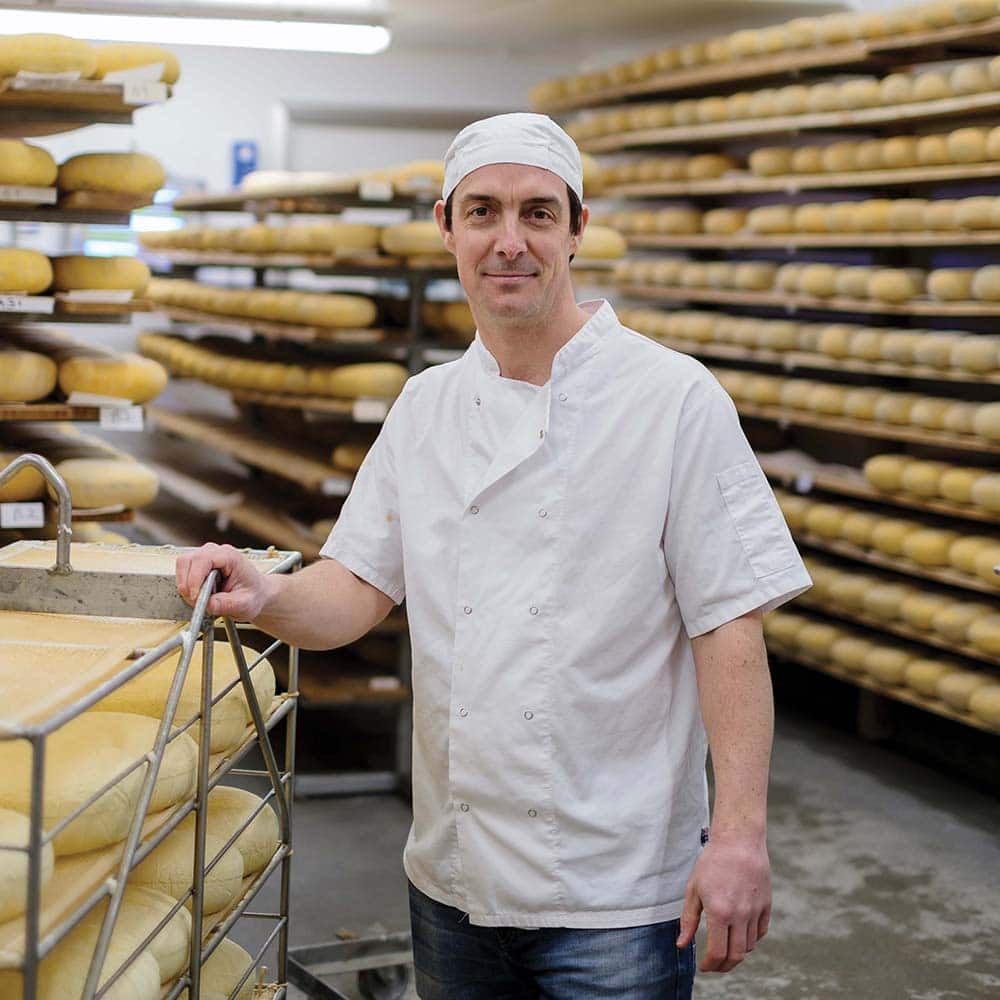
The story of Park Farm as Hugh knows it began with his great-grandparents, who moved to Kelston in 1914 and established a traditional mixed farm here in the foothills of the Cotswolds. “My great-grandmother made cheese, next to what is now my parents’ house.” Hugh points to a beautiful stone house, up a track, tucked away from the main farm buildings. In 1990, his father, Graham, decided to resurrect the family’s cheesemaking tradition, which along with most of British farmhouse cheese production, had been seen off after the second world war. “During the war, and for a long time afterwards, you would sell your milk to the Milk Marketing Board and buy it back if you wanted to make cheeses. Most was made into ‘government cheddar’,” Hugh explains.
Inspired to start making cheese, Graham Padfield did some research, and found a letter written by Horatio Nelson’s father to the legendary sailor recommending a cream cheese from Bath. Emboldened by further reports that suggested soft cheese was prevalent across the southwest of England prior to the 20th century, he tracked down a recipe in an old grocer’s book and set to making it. “The only part of the original recipe we don’t follow is that salt be sprinkled on the young cheeses ‘with the aid of a feather’,” Hugh smiles. “I’m not sure how well that would go down with the Environmental Health officers.”
Fast-forward 20 years and the Padfields have developed a whole family of cheeses, garnering numerous awards in the process. They’ve moved production to a purpose-built cheese dairy and milking parlour, having outgrown the old outhouse in which Hugh’s great-grandmother once worked, and they now have 160 heads of cattle to their name. The Padfields are proud to embrace technologies that can improve their practice. A few minutes after meeting him, Hugh leads me into the farm’s small office to find Graham energetically engaged in an online tractor auction. “The numbers go up so fast!” he murmurs. This is farming for the 21st century – and yet, outside the office, away from the viewing galleries, computers and sizzling cheese toastie machine, it really could be 1914 again.
The pastures are unchanged. The farmhouses are unchanged. “The fields are still named things like Station Ground and Cherry Cottage,” Hugh says proudly. A few years ago, he found a photograph of his father as a baby, held by his grandfather with his great-grandfather standing by: “It was in the yard outside our house – and the first thing I saw was that the plank of wood leaning against the wall in that photo is still there,” he laughs. “At least, there is still a plank of wood leaning against that wall. Over all these years people have clearly thought it the perfect place to leave a spare plank.”
It’s a touching detail, and oddly reassuring. Though the last 50 years has seen a shift from manual to automated milking, from wicker baskets to plastic cheese moulds, from informed guesswork to collars that measure the temperature, movement and milk yield of an animal, some things have remained constant. The cheese at Park Farm is still made by hand; the cows are still pasture-fed for at least six months of the year; and if you have a plank of wood going spare, there is a handy place for you to leave it, just against that wall.
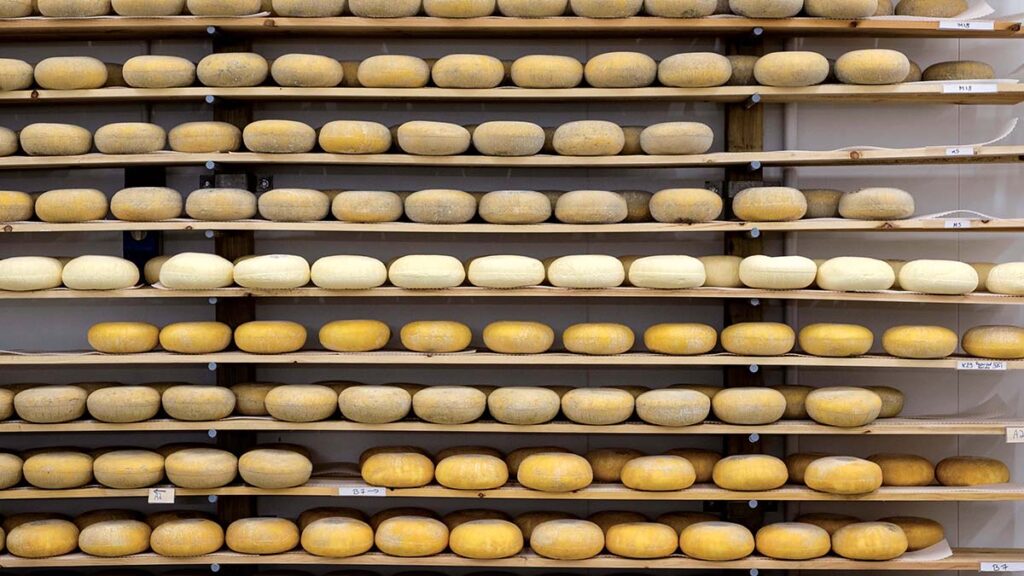
For all the social media and viewing galleries, tradition clearly matters to Hugh. It’s one of the reasons he farms organically. “I think one of the fun things about being organic is learning how to work with nature. We fix nitrogen in the soil by encouraging the growth of clover, we manage that growth so there isn’t so much clover as to upset the cows’ stomachs; we take non-chemical approaches to tackling weeds.” They use muck to fertilise the field rather than artificial fertiliser, and the cows receive medicine only when it’s really needed – they aren’t routinely dosed, as they might be in an intensive system. Welfare standards are high – 600 acres to graze, and fresh bedding to come home to after a day spent enjoying the pasture.
In short, conditions at Park Farm are ripe for the creation of farmhouse cheeses – and that’s before you get to the geographical advantages of southwest England. I experience these first-hand when I arrive: vertical rain followed by warm, glistening sunshine illuminating grass of a brilliant, rich shade of green. “The climate and landscape here are much the same as in northern France, where camembert and brie originate,” says Hugh. “There’s a wet climate, low, lush grasslands and strong traditions of dairy and cider.” Camembert and the soft cheeses made in these parts seem to have originated at about the same time, “around the 1790s”, Hugh explains, and a degree of copying between the two regions seems probable. “The type of cheese and the type of cider they make in northern France – the soft, fizzy type – are similar to that made here. In many respects Brittany, Île-de-France and Normandy have more in common with southwest England than they do Paris or Provence.”
Like many farmers in Somerset, Graham Padfield brews his own cider, using organic apples harvested at Park Farm every autumn. It’s this cider that washes the Merry Wyfe cheeses every day for four weeks, lending them their distinctive, pinky-orange rind. Entering the maturing rooms is like walking into a sunset, with scores of round cheeses in various states of blushing maturation. “I love the colour palette – and the smell,” breathes Hugh. “That’s the smell of the bacteria turning the cheese orange. The cider provides the nutrients that it grows on.” The taste is not nearly as strong as the pungent cider smell suggests. It is creamy and tangy, more sweet than vegetal. It’s no Wyfe of Bath – my personal favourite, which is brined then aged in a maturing room the size of a small church – but there’s no denying its superiority as a washed-rind cheese.
Park Farm’s cheesemaking rooms are much like the rest of the farm: homespun but high tech, relaxed but orderly. In one, three cheesemakers are sealing some Bath Blues with a warm palette knife – a technique that looks not unlike icing a cake. “The blue mould peaks after seven weeks, but the cheese itself will peak after 12 weeks, so you need to give the cheese a five-week head-start,” Hugh explains. “They’re sealing it to keep the air out.” After five weeks, the cheesemakers will stab each cheese with a pin 200 times, to allow the bacteria to ‘breathe’ and unfurl its blue-veined fingers along the cracks. That must be therapeutic, I suggest to the cheesemakers. “It is for the first five minutes. The next four hours – not so much,” one of the group grins.
Popular belief would have it that unpasteurised milk always makes for better cheese. The Padfields beg to differ – and you don’t need to take their word for it. In 2015 their Bath Blue cheese won Supreme Cheese at the World Cheese Awards, the highest possible accolade for any cheese. Neither this nor any of the other cheeses produced at Park Farm is made with raw milk – the milk here has to be pasteurised, as this is such a badger-intensive area. “The risks of TB are too high,” says Hugh, and they aren’t taking any chances.
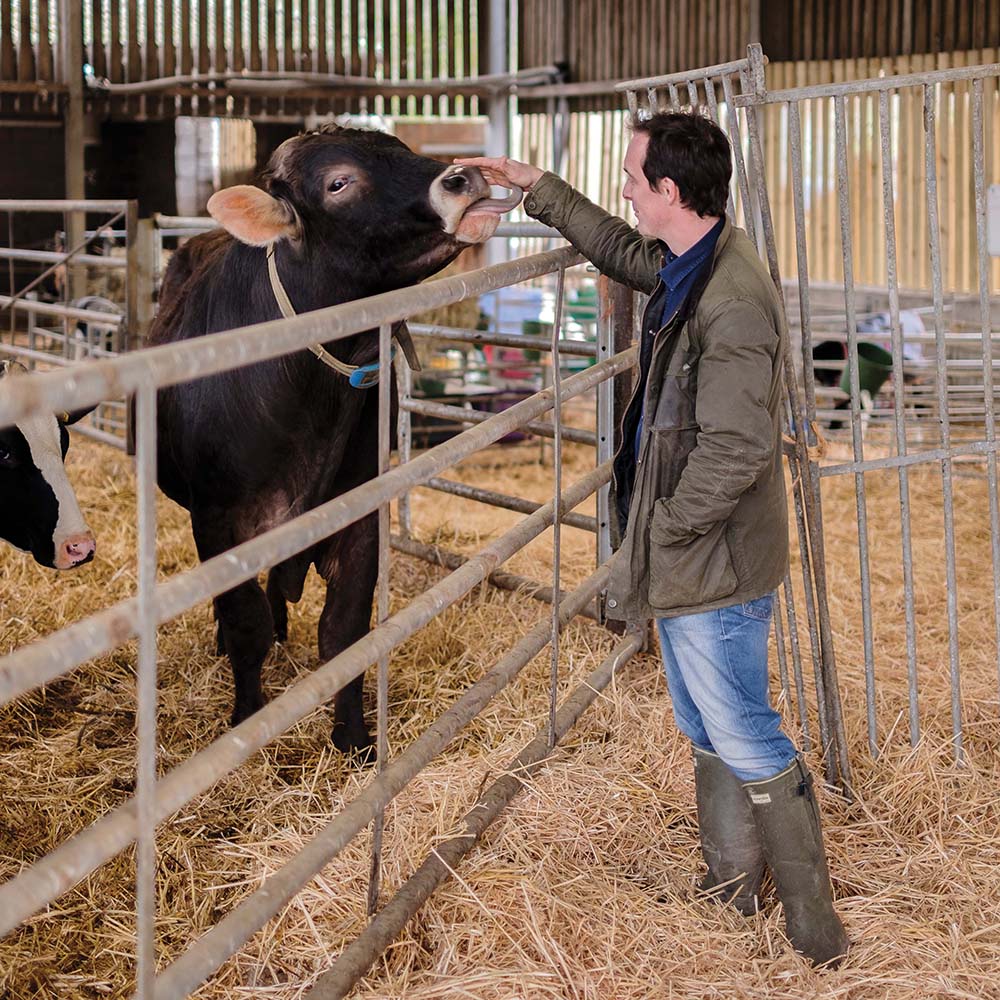
That they still manage to create highly characterful cheeses stems in part from their technique of batch-pasteurising at a lower temperature than usual, which “slightly caramelises the milk sugars,” says Hugh. “It’s gentler on the milk than flash pasteurisation, which heats the milk to a much higher temperature for a shorter time. Our way, you get more homemade, creamy flavours.” The result is delicious – rich, buttery, almost clotted cream-like. The starters they use are also designed to mitigate the loss of the milk’s naturally-occurring bacteria. “One of the things I am keen to point out is how carefully we select the cultures we inoculate our cheese with, some of which replicate the bacteria you’d find in raw milk. This gives it so much flavour.”
The Padfields use calf-based rennet to coagulate the milk in all but two of their cheeses, in recognition of the ancient origins of cheesemaking (“It is up there with berries and meat as one of our earliest food sources”), and the fact that the beef industry and the dairy industry are unavoidably linked. “Farmers know that the dairy industry could not exist without the beef industry. Cows have calves, half of those are boys, those boys go to become beef.” The use of rennet is, he says, a natural part of that cycle, and it tastes better. “All rennets have a slight tendency towards bitterness, but vegetarian rennet is particularly bitter,” Hugh continues. “I know farmers who use vegetarian rennet when they supply supermarkets, but use traditional rennet when entering their cheese into awards.” That said, the subtle sweetness of Wyfe of Bath and Merry Wyfe is enough to mask the bitterness of vegetarian rennet, enabling Bath Soft Cheese to cater to vegetarians to some degree.
Once set, the curds are stirred or cut to release the whey and achieve the desired consistency and texture. To retain moisture, soft cheese needs larger curds; to lose moisture, hard cheese demands smaller ones. The size of these, and the point at which the mixture is poured into moulds is down to the cheesemaker, who will make a judgement call according to the look and feel of the curds and the type of cheese they’re making. “The skill of the cheesemaker is vital,” says Hugh. There is no probe or gauge to match it. It is experience and observation that enables him to say when the mixtures have sufficiently coagulated.
Watching them in action (they’re making Bath Soft Cheese when I’m there, and the curds and whey slop gently against the side of the buckets as they stir) is more mesmeric than mechanical, despite the incredible level of precision the process needs. In the maturing rooms, cheeses are stacked, turned, brushed or washed by hand, and sit on wooden shelves which propagate and sustain the friendly yeast cultures that live on the rinds.
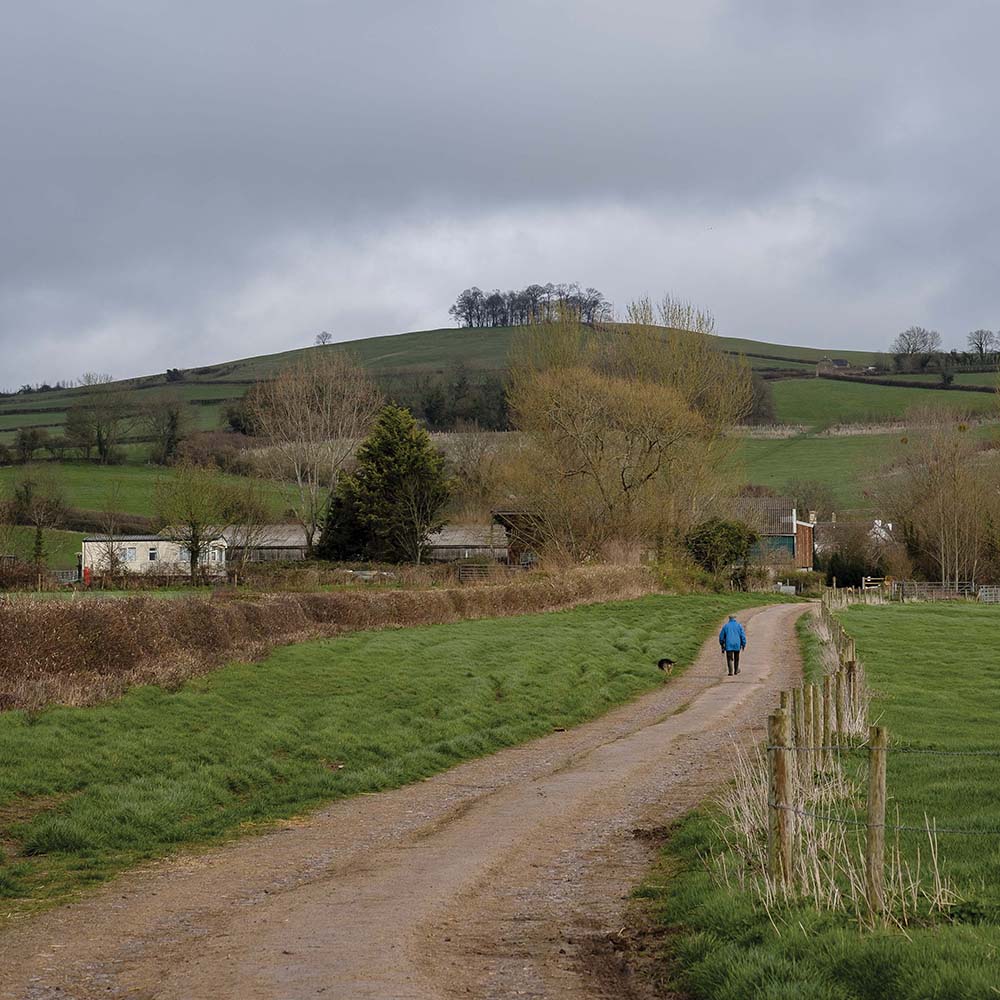
The silence is palpable. You can almost hear the bacteria: fermenting, growing, spreading, uniting milk, time and provenance. “There are billions of bacteria here in each cheese. They are living things,” says Hugh, proudly. In the maturation rooms he breaks an immature Bath Soft Cheese in half, and shares some with me. “As a young cheese it is salty, a bit creamy, but chalkier,” he muses as he chews. Later on, we have a cheeseboard in the cafe and taste the same cheese again, several weeks older. “Now there are notes of slow-cooked mushrooms, bright lemons and garlic. It’s so different,” he exclaims. Ripe, rich and squidgy, it cries out for sourdough, which the cafe provides with characteristic generosity.
On the table next to us, another family have sat down to watch the cheesemakers. “There’s something about understanding from an early age just where your food comes from. Humans don’t like surprises,” says Hugh. Part of the vehemence of movements like extreme veganism comes from a feeling of being “duped”, he continues – “the sense of the food industry keeping things from us. That’s why we’ve been so keen on people visiting.” Tomorrow, Hugh will take a group of primary school children around the farm – something he’s been doing increasingly since he found his son’s school’s ‘field to fork’ trip entailed going to their local supermarket. He’s still not worked out how to answer the “where do calves come from” question – “I think I’ll leave that one for the teachers or parents!” he grins – but he doesn’t shy away from the kids’ other queries. “We want people to challenge us. We want people to ask questions. We want people to come and see.”
Dress to impress: olives
Ed Smith on the Market ingredients that, with minimum effort and maximum effect, can embellish a finished dish. This time: olives


“THE LONG, TUBULAR, INKY-BLACK RAZOR CLAMS ARE KNOWN IN SCOTLAND AS ‘SPOOTS’ DUE TO THEIR SPOUT-LIKE APPEARANCE.”
Palourde
These pretty, marble-shelled clams at Furness Fish Markets come to the Market fresh from Cornwall. They’re the perfect all-rounder, being medium in size and somewhere between meaty cherrystones and sweet littlenecks in flavour. Given their propensity for quick-cooking, they’re great for spaghetti vongole, cooked simply with, garlic, white wine, black pepper and a glug of good olive oil.
Vernis
These smooth shelled, polished-looking bivalves (‘vernis’ being French for ‘varnish’) are among the largest clams available at the Market. At Furness Fish Markets, they are sourced from the south of France, and they’re said to be a favourite among customers. On the pricier side, but well worth it for their superlative taste and texture. Four between two people should be plenty.
Cherrystone
Cherrystone clams – named after the Virginian town where they were first found – are often the stars of east coast America’s most famous dish, clam chowder. At Richard Haward’s Oysters they hail from Essex, and are available to take away or simply slurp raw on the spot, dressed with naught but a squeeze of fresh lemon – the best way to appreciate their texture and sweet-salty, caramel-like flavour.
Razor
The long, tubular, inky-black clams at Furness Fish Markets – known in Scotland as ‘spoots’ due to their spout-like appearance – are as fresh as you can get, short of plucking them from the Shetland shore yourself. And while terrifying in both name and appearance, they’re delicious and incredibly simple to cook. Try steaming them whole and serving with saffron mayo and crusty bread.
Quahog
Part of the hard shell family along with cherrystones and teeny-tiny littleneck clams, these bivalve molluscs are mildly sweet in flavour. Hand-picked by the fishermen at Poole Harbour in Dorset and brought to Shellseekers Fish & Game, strict regulations in terms of minimum size and acceptable fishing methods make these tasty shellfish a good sustainable option.
Dress to impress: olives
Ed Smith on the Market ingredients that, with minimum effort and maximum effect, can embellish a finished dish. This time: olives


“BILL STAYS AS TRUE TO THE SPIRIT OF ALPINE CHEESE AS IS POSSIBLE WITHIN THE URBAN ENVIRONS OF SE1”
“I suppose the name is a bit of a pun,” Bill Oglethorpe grins, “on me being hard pressed to make cheese in Bermondsey.” It’s not a feat to be sniffed at, for all that Bill’s cheese is deeply aromatic. Though there are at least a handful of cheesemakers based in London today, back when Bill set up Kappacasein in a converted railway arch in Bermondsey in 2000, he was something of a pioneer.
Bermondsey Hard Pressed was the first cheese he made, using a 100-year-old copper vat he brought over from Switzerland. A hard, alpine-style cheese modelled on L’Etivaz (Bill spent months working with veteran cheesemakers in the eponymous town before establishing Kappacasein), its long maturation time of 12 to 18 months – ”though I do get impatient sometimes, at 11 months,” he confesses – makes it well suited to the low, steady temperatures of the arch: even if “an alpage in the mountains in June, with a pasture full of wild flowers that have never been cultivated, would really be the ideal”.
Still, the arch was here, and it was available. What’s more, being in London Bill’s cheese are but a 10-minute bike ride away from his point of sale. He has his own retail stall at the Market, so he can sell his cheeses as well as melt them over potatoes and sourdough toast at his famous street food joint on Stoney Street. Where L’Etivaz was traditionally made to keep for a long time and be transported over long distances, Bill has no such problem. Nevertheless, he insists on staying as true to the spirit of alpine cheese as it is possible to do within the sprawling urban environs of SE1.
“In the Alps, of course, the cheesemakers go from one room, the milking parlour, to the next, the dairy,” he says, “but there is still a wait time to allow the milk to mature.” Here in London, this essential ‘wait time’ takes place not in stasis, but in the back of Bill’s specially adapted van. “We put the starter in when we collect the milk from the farm in Kent,” he says. “The milk is still warm from the cow, so the ripening takes place on the way back to Bermondsey. By the time it gets here, it’s ready.” A little bit of heat, to bring it up to 33C, some activated calves’ rennet, and “the acidification can start”.
Hard pressed isn’t just a pun, it is also a classification of cheese. “You have un-pressed – cheeses that are drained – semi-pressed, and hard-pressed cheeses.” By pressing and heating, he continues, you reduce the percentage of moisture in the cheese. “That means it can age for longer,” Bill explains, “because it is drier and more stable.” The press Kappacasein uses – a big, heavy thing, also hailing from Etivaz – is a hard taskmaster, as Bill has come to realise increasingly. “We’ve been making some of our wheels too small, and as a result I think we were over-pressing. The system is built for big cheeses, so we’ve started making ours bigger, so they can withstand the weight and reach the right texture.”
Another change Bill is instigating this year, inspired by L’Etivaz, is to only make his Bermondsey Hard Pressed in summer. “In Etivaz the cheese is made between May and October, when all of the herds are grazing on the wild, uncultivated pastures of the mountain side.” There are no mountains at Commonwork Organic Farms in Kent of course, but there are pastures with wild grasses, and for as long as is possible the cows are grazed outdoors. “The taste of the milk, and the cheese, is so much better for it,” says Bill. “I’ve been reading a lot about Buddhism recently, and one of their key principles is that change happens all the time and one should embrace it.” How better to put this philosophy into practise than to work with the seasons to further refine what is already the ultimate expression of positive change: aged, alpine-style, Bermondsey-made cheese.
